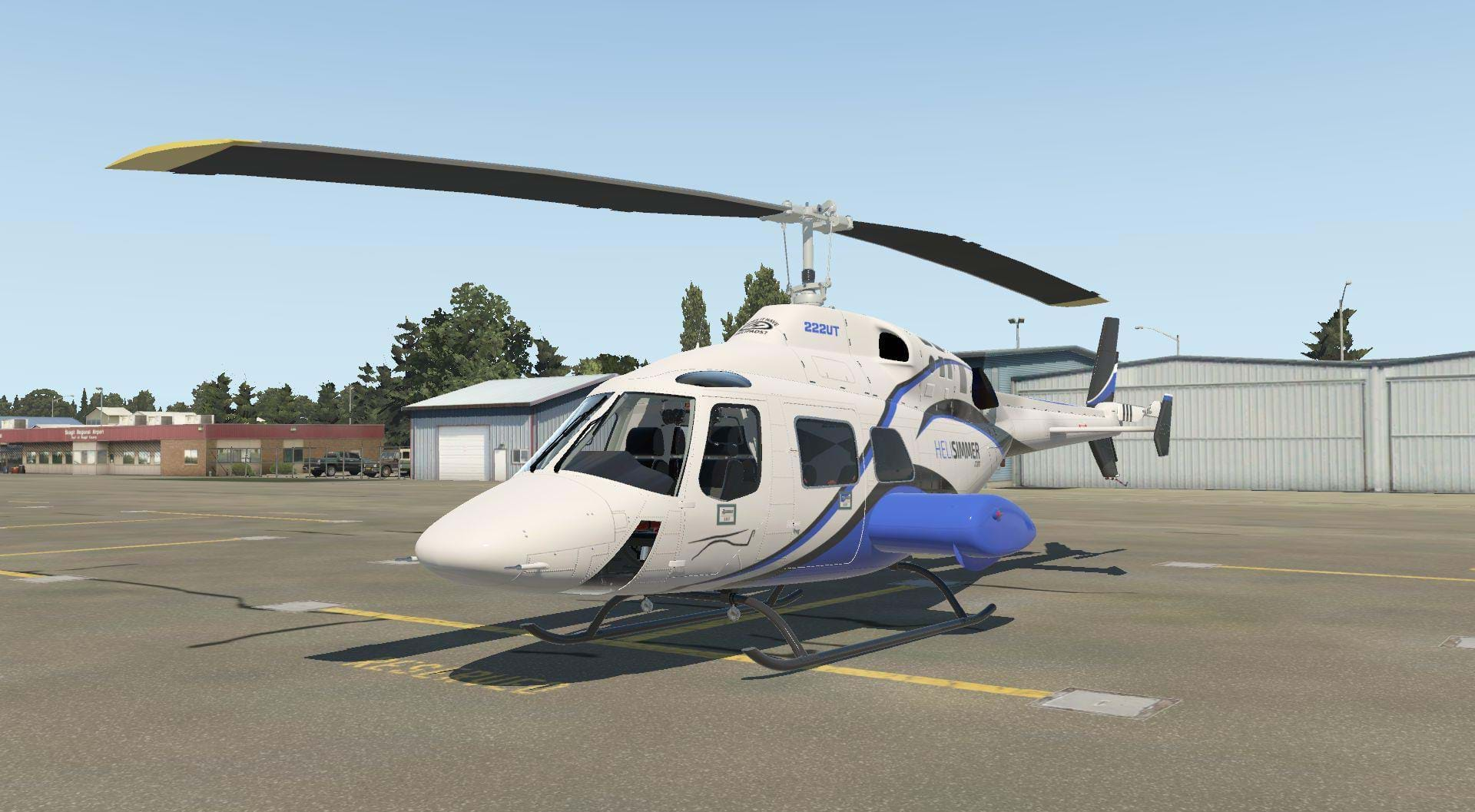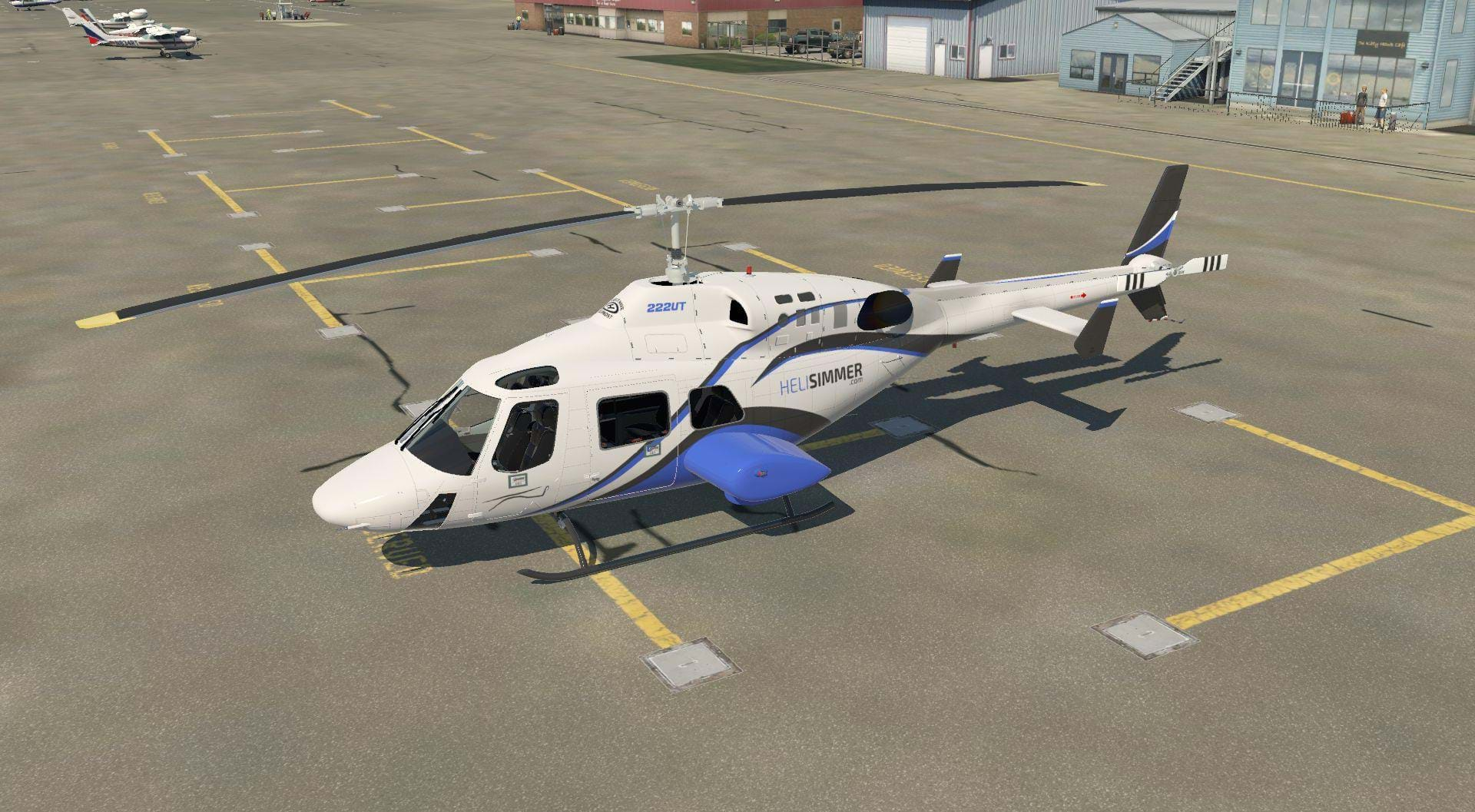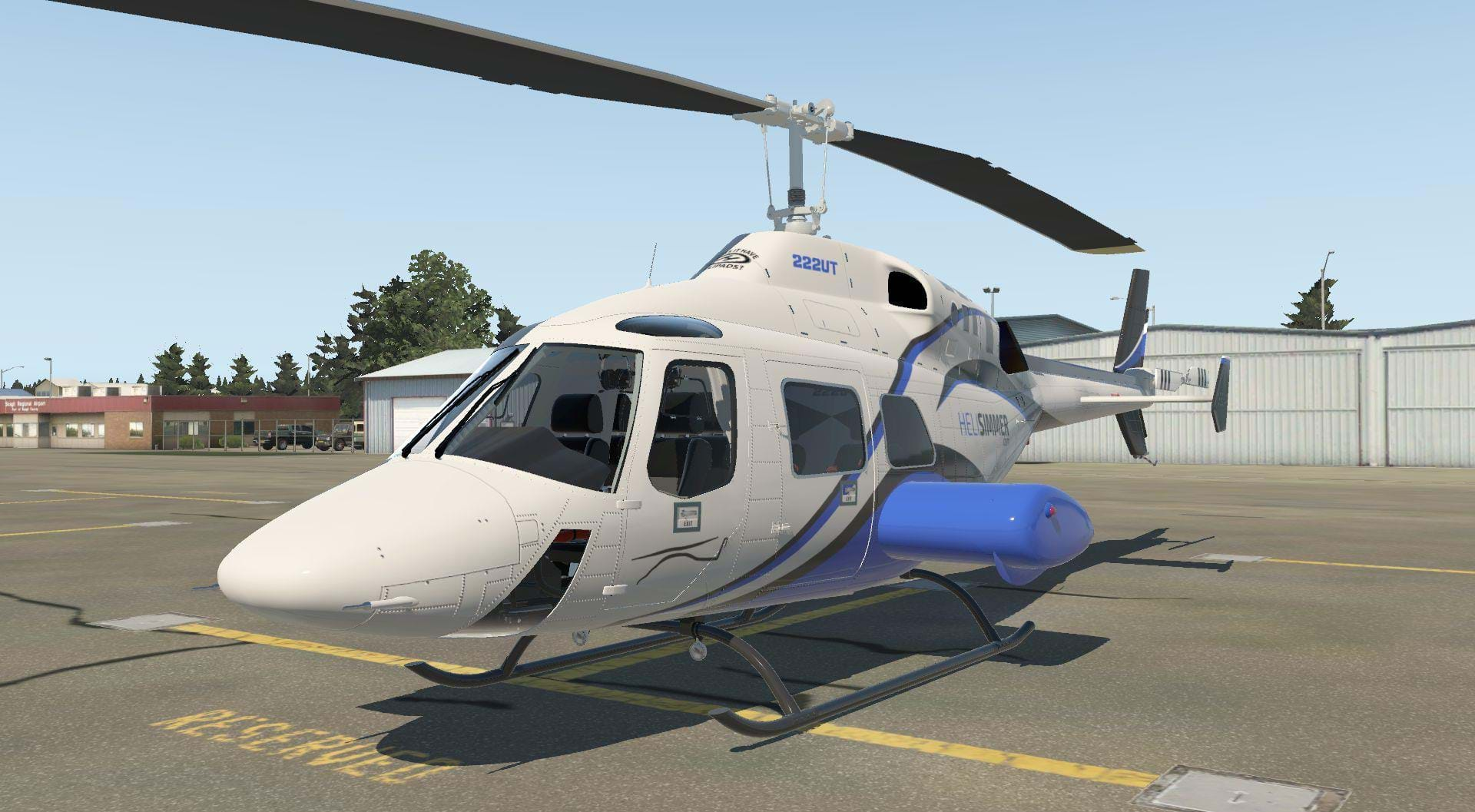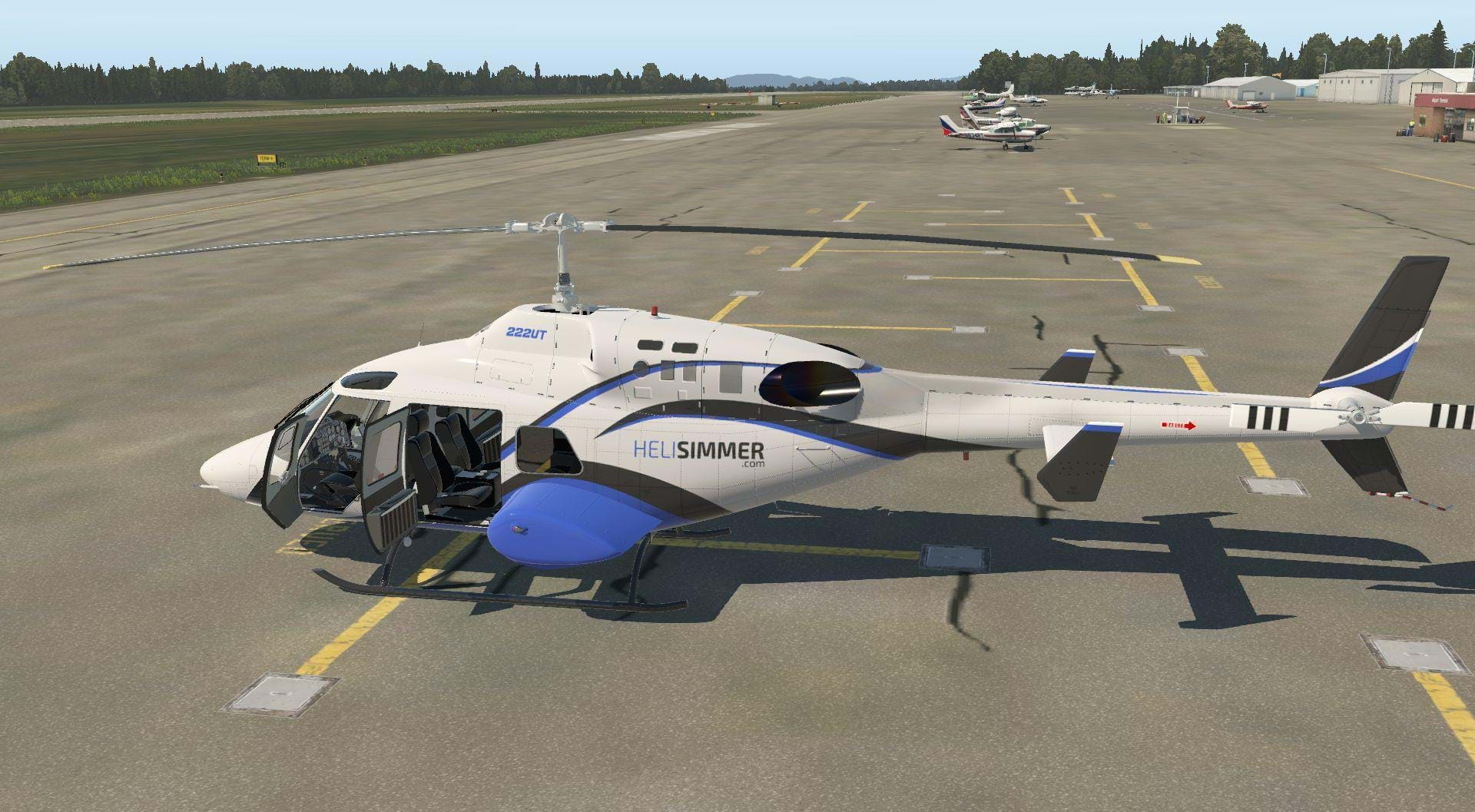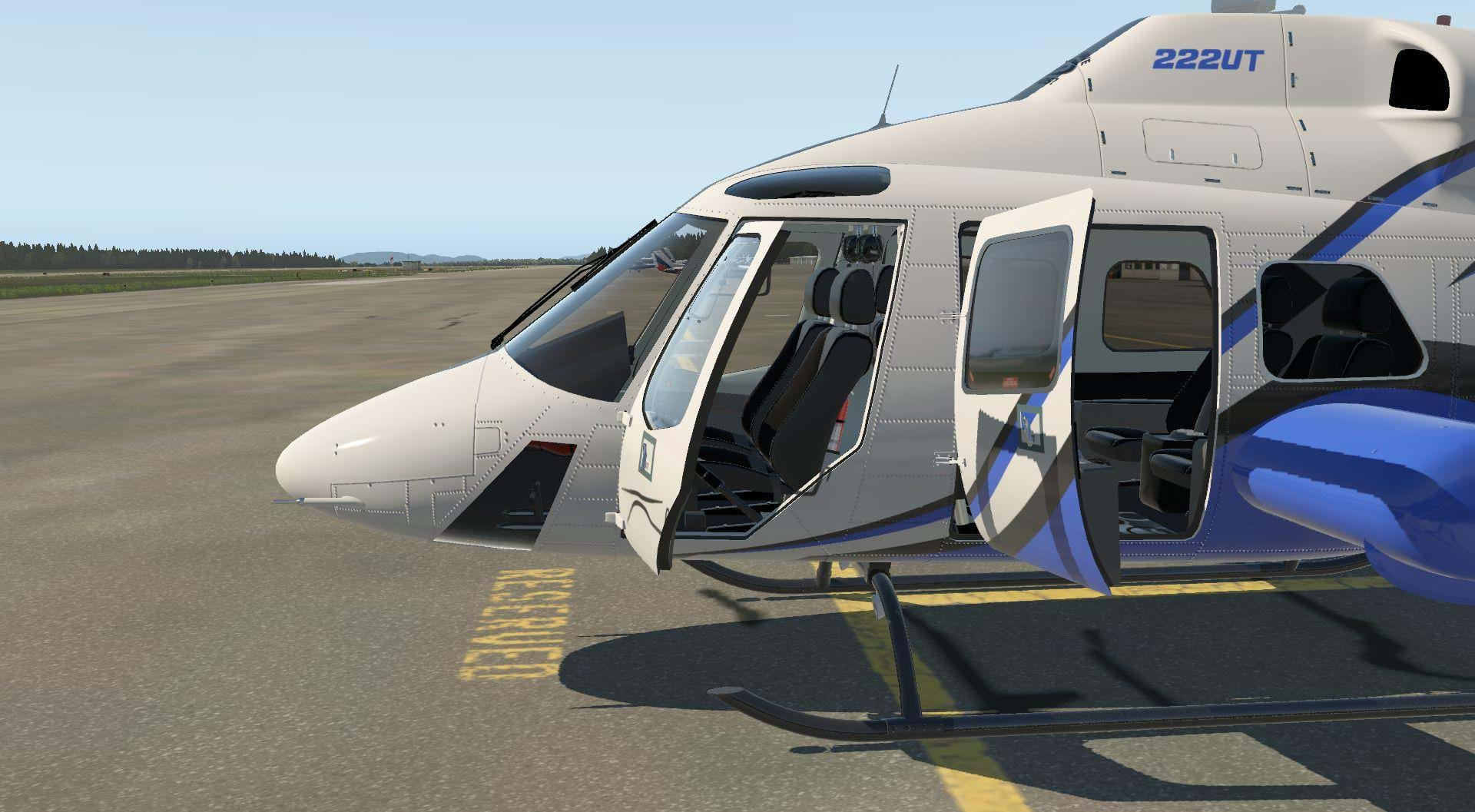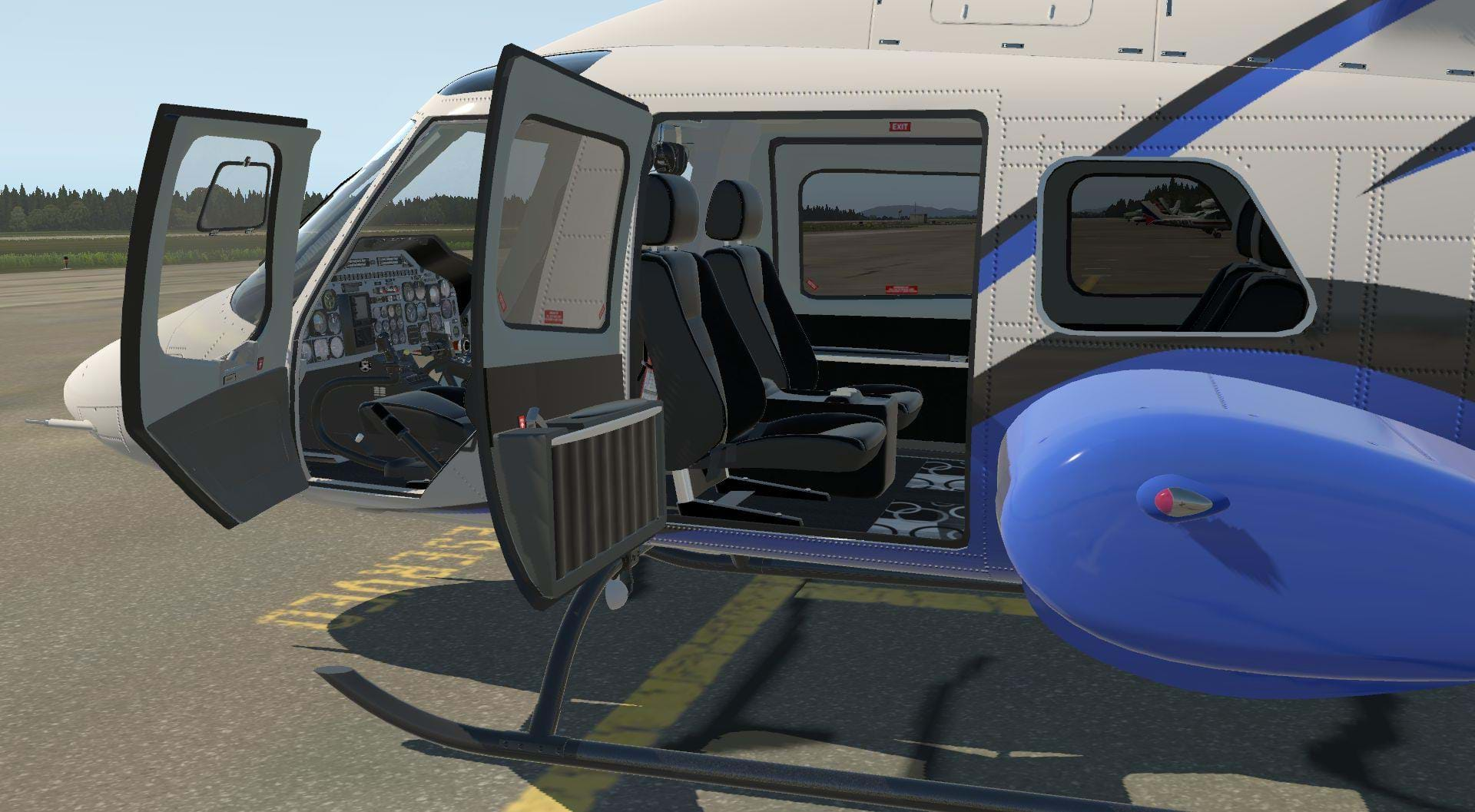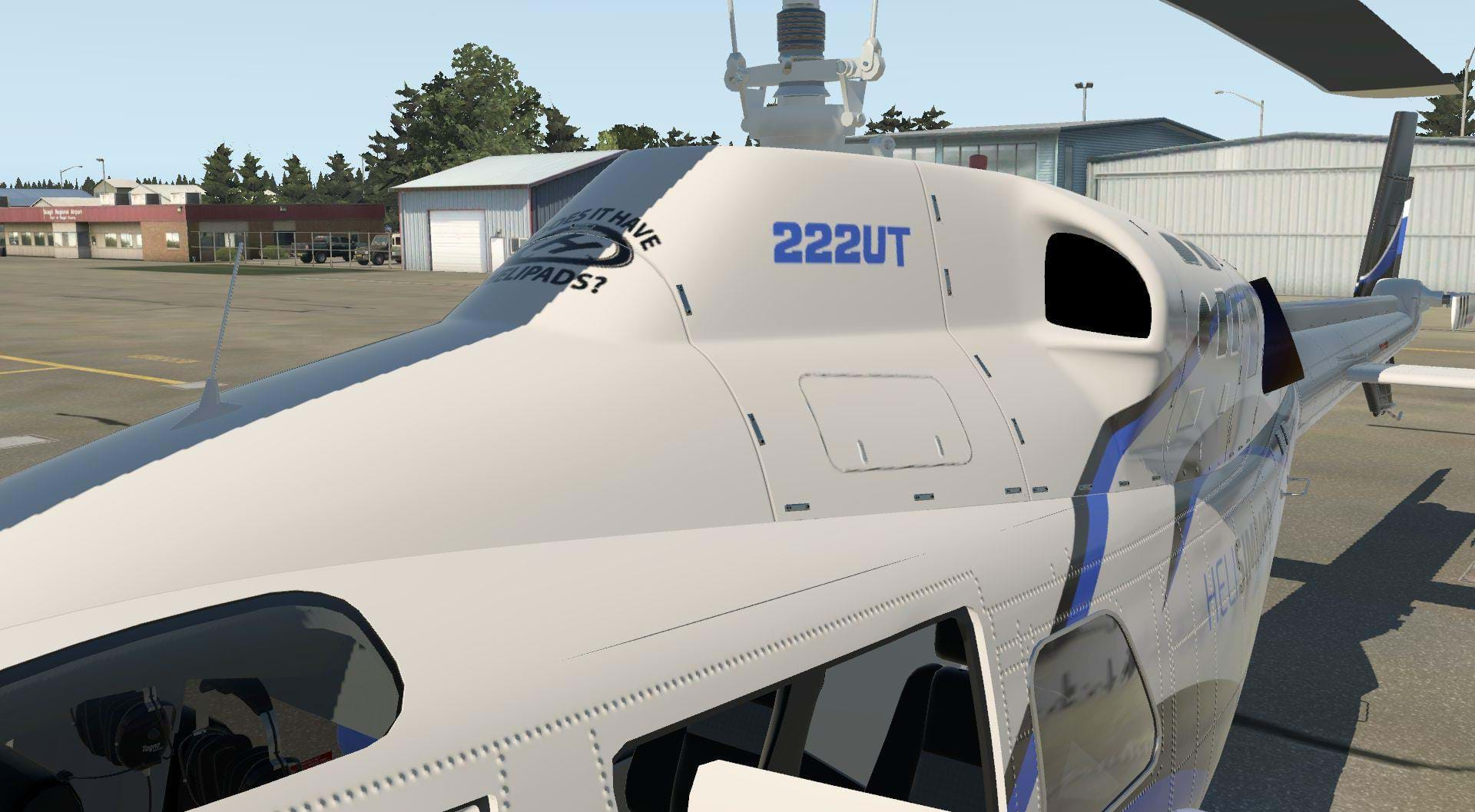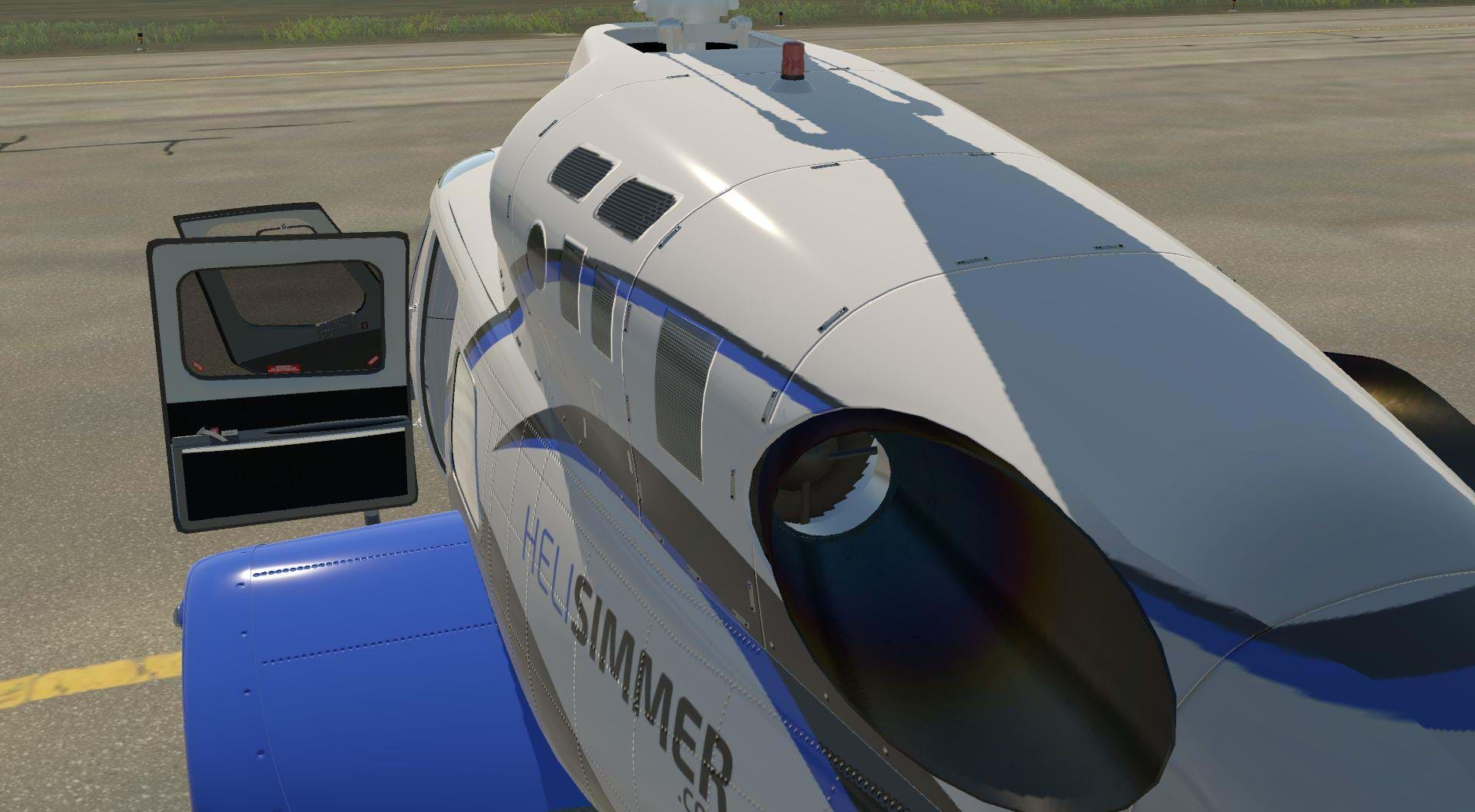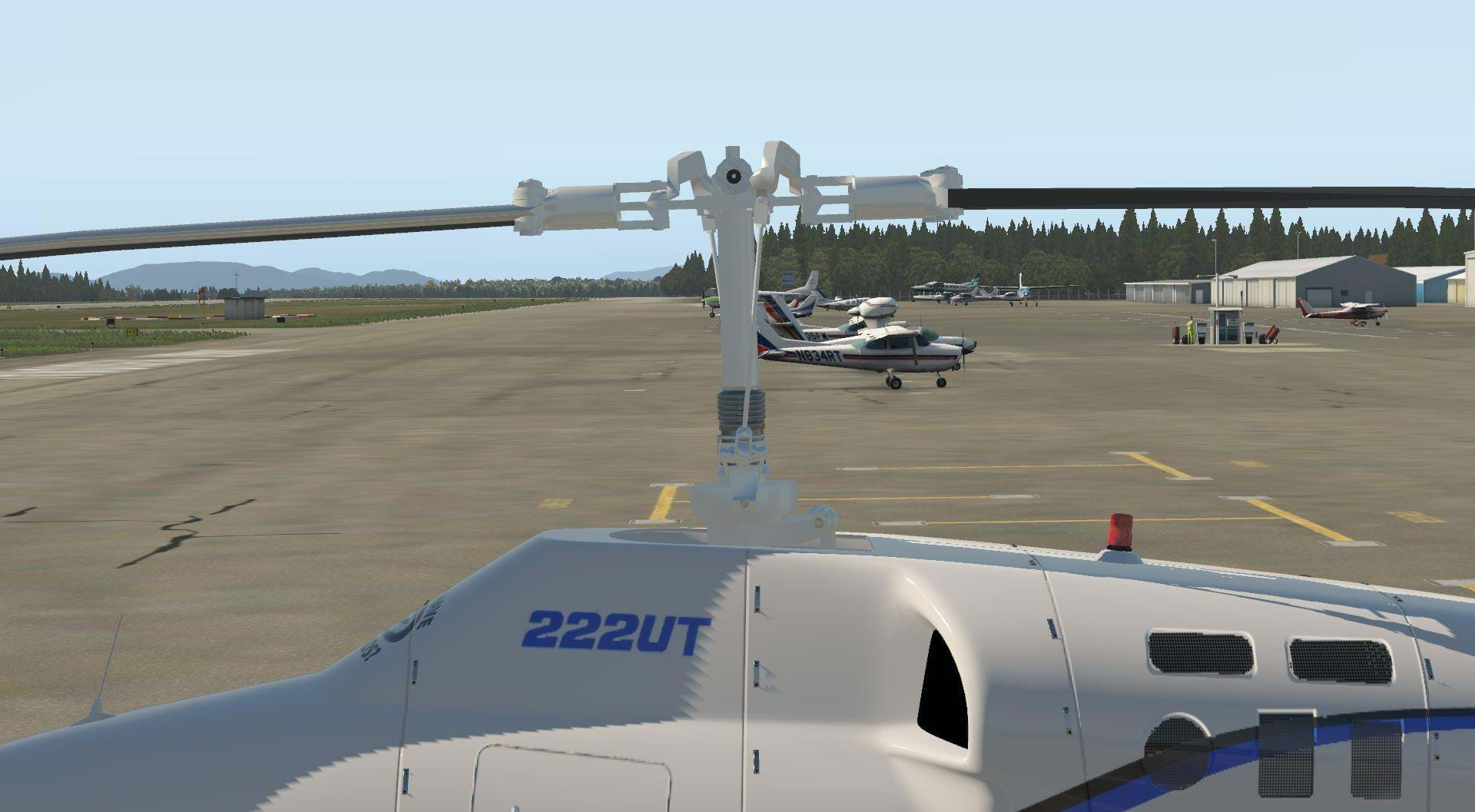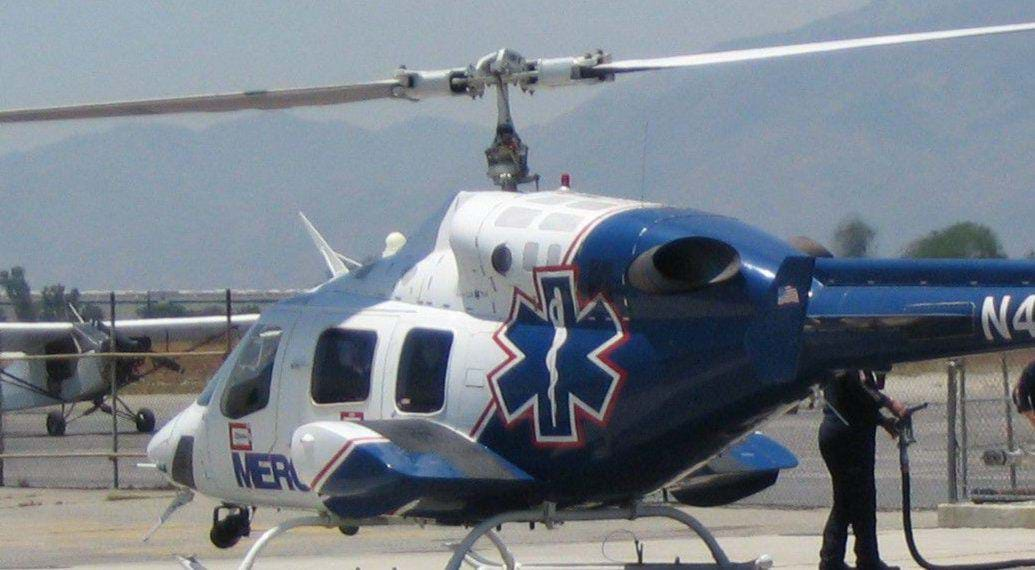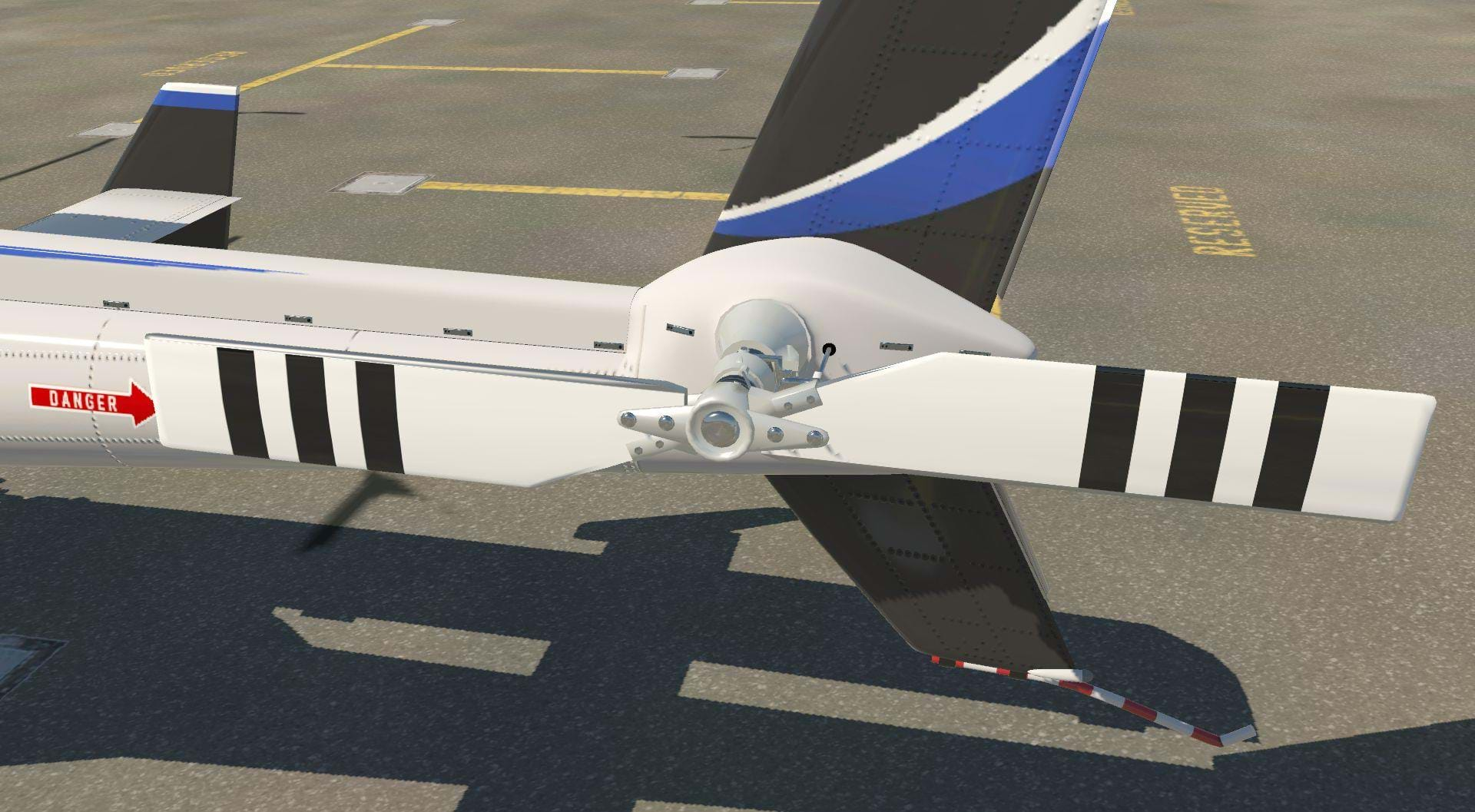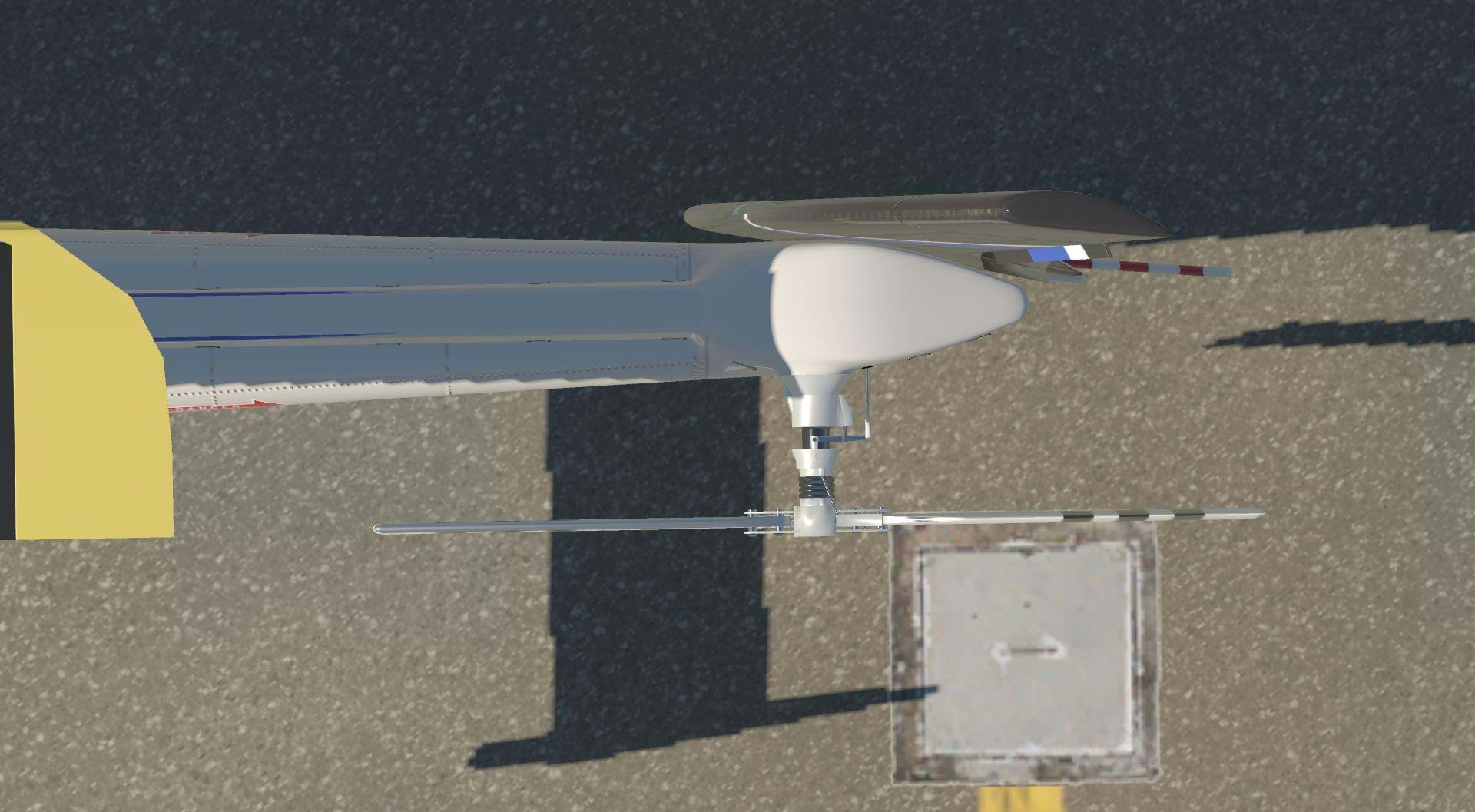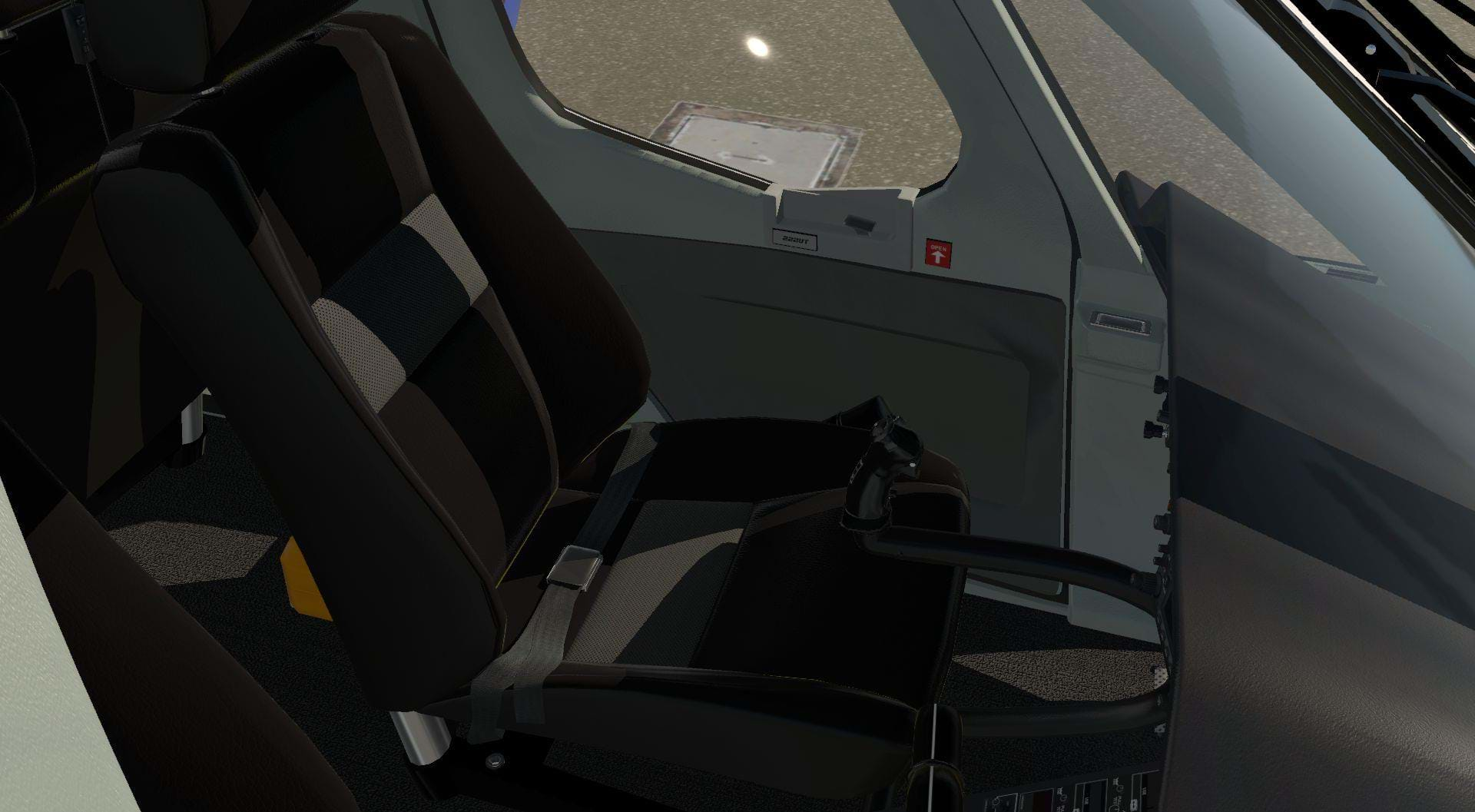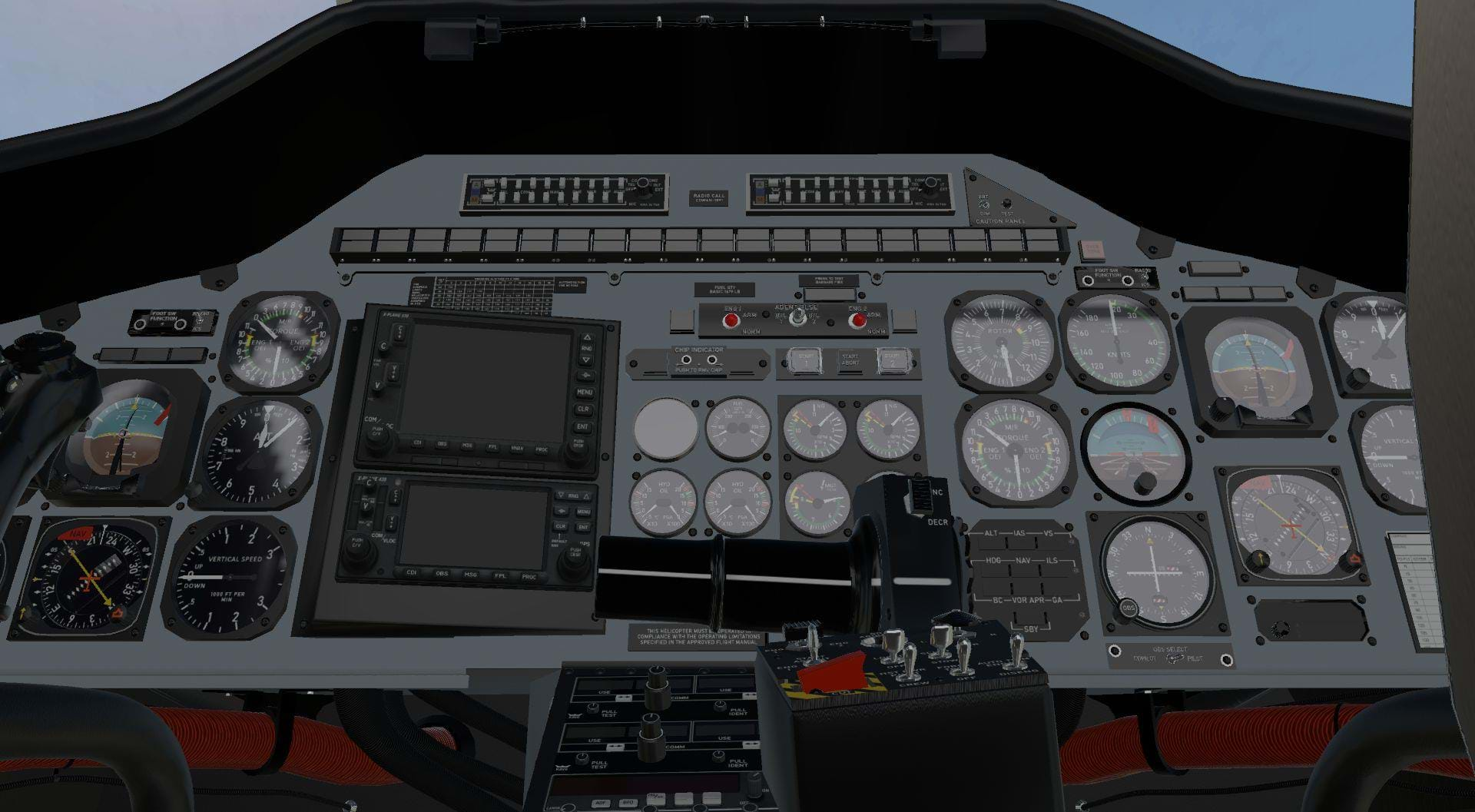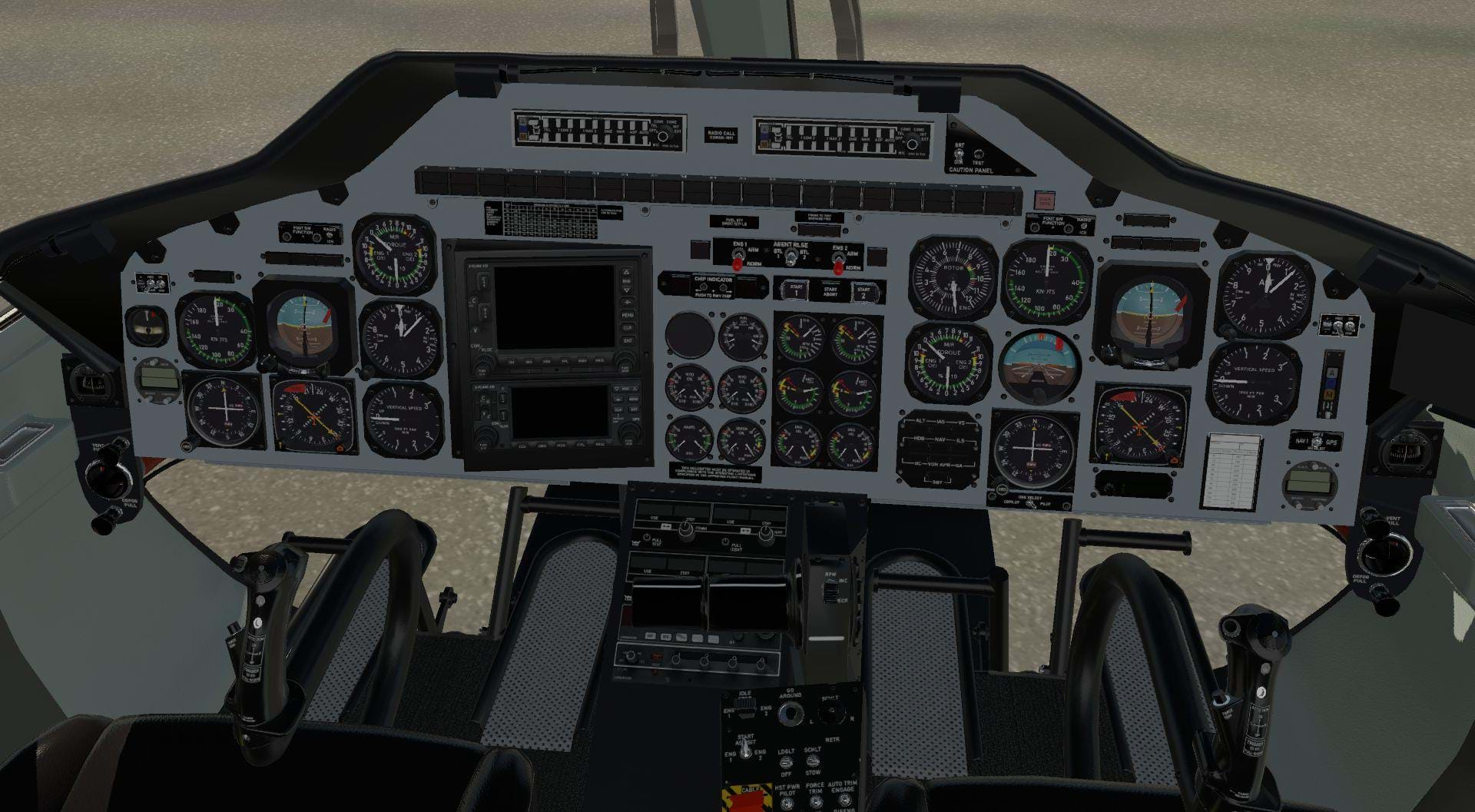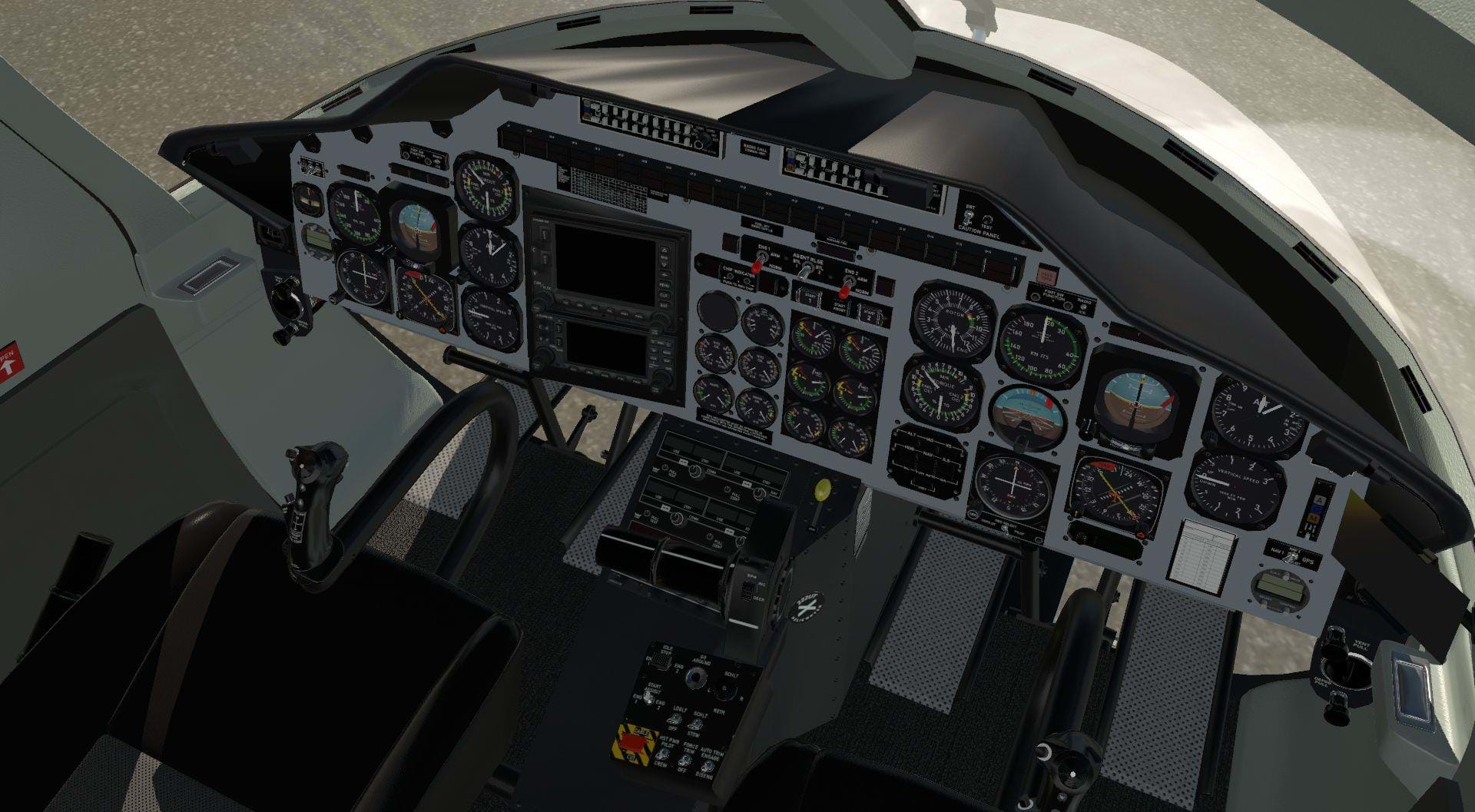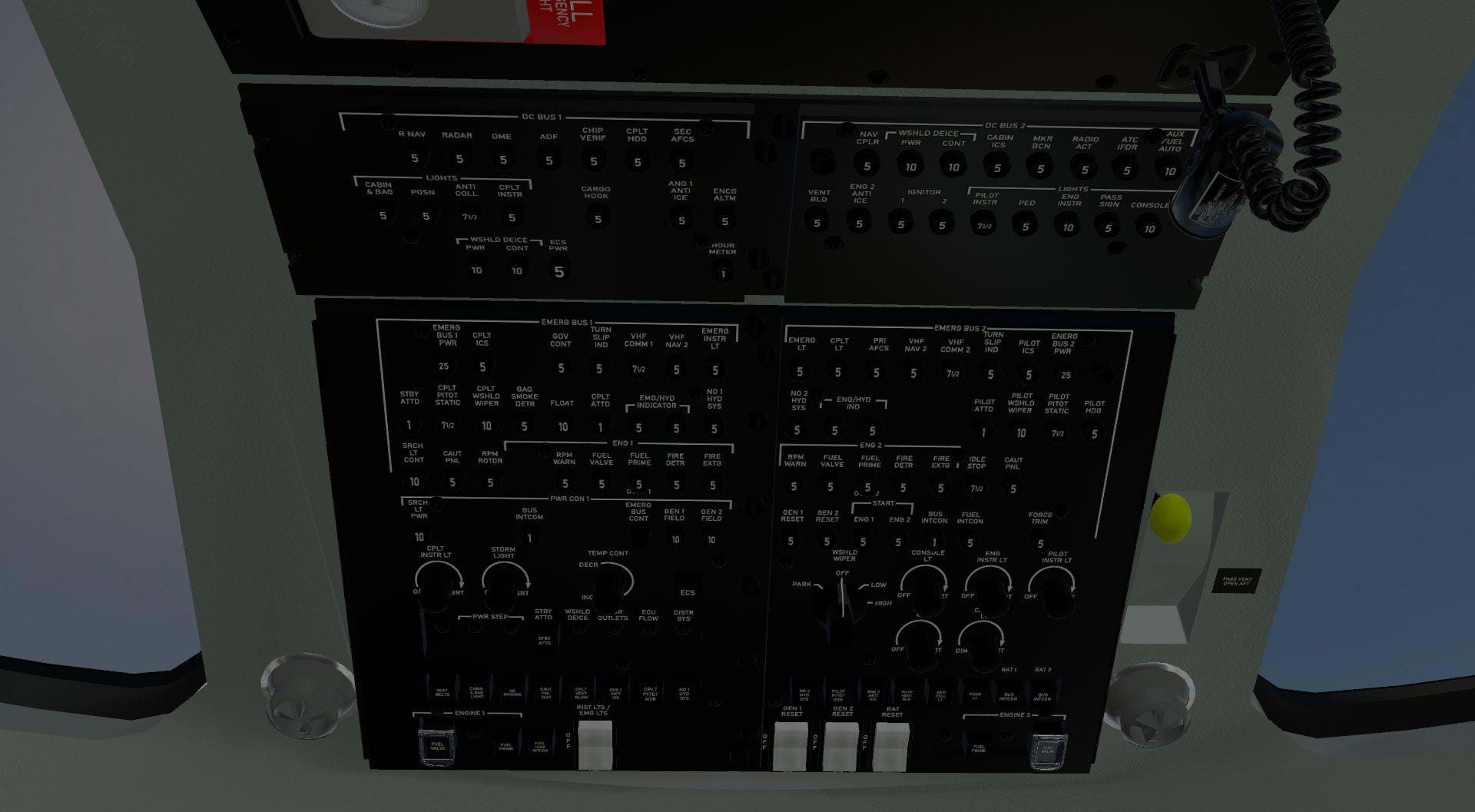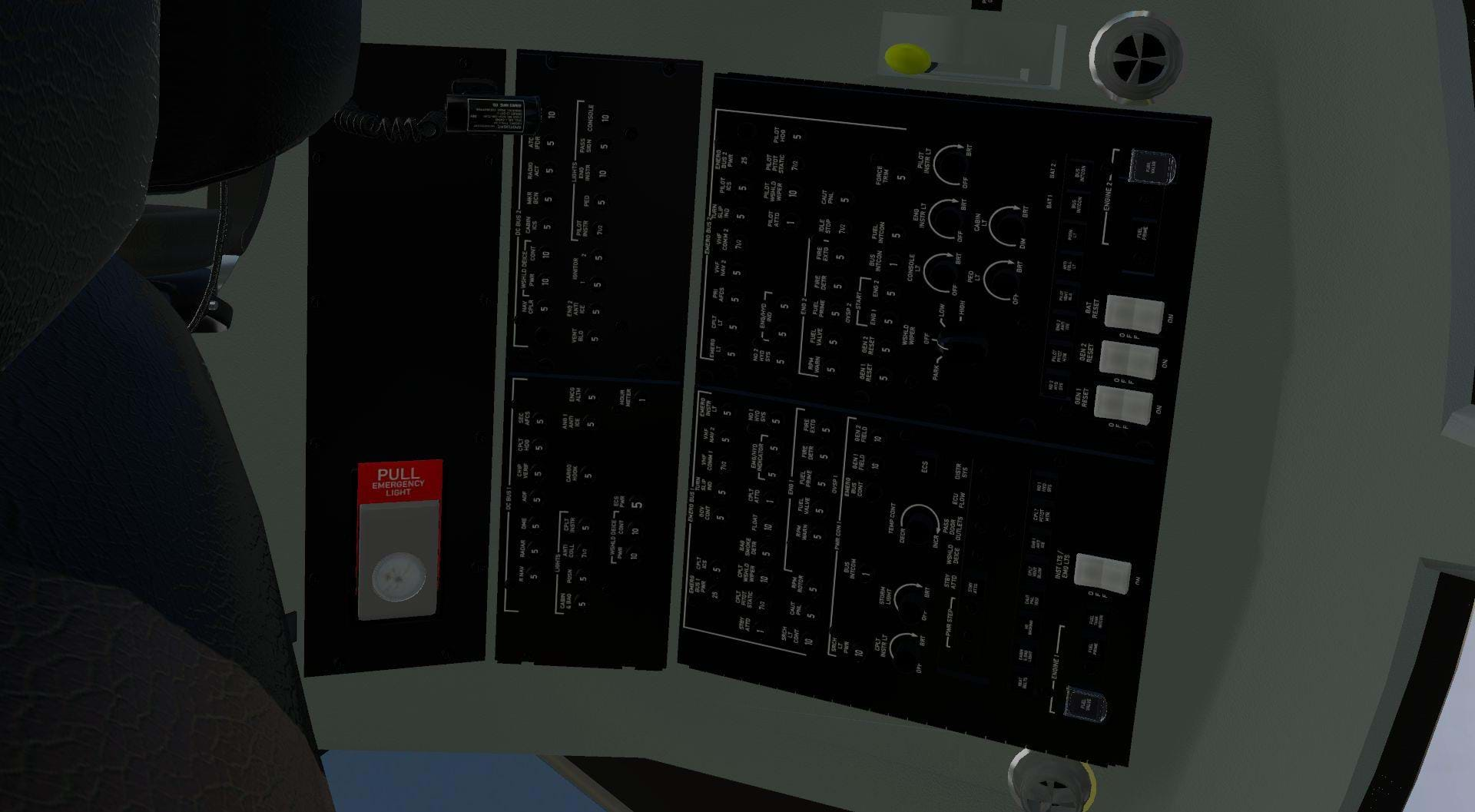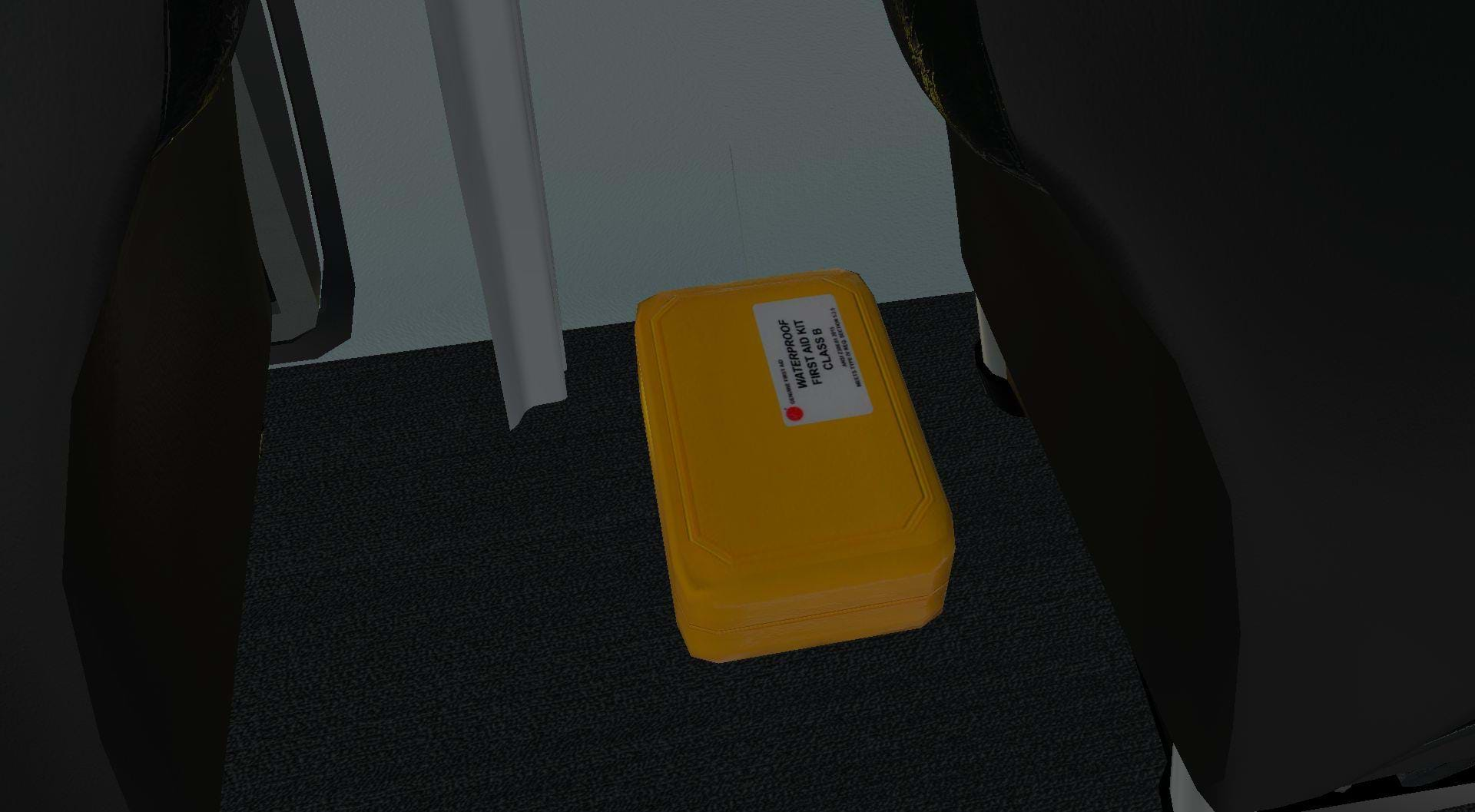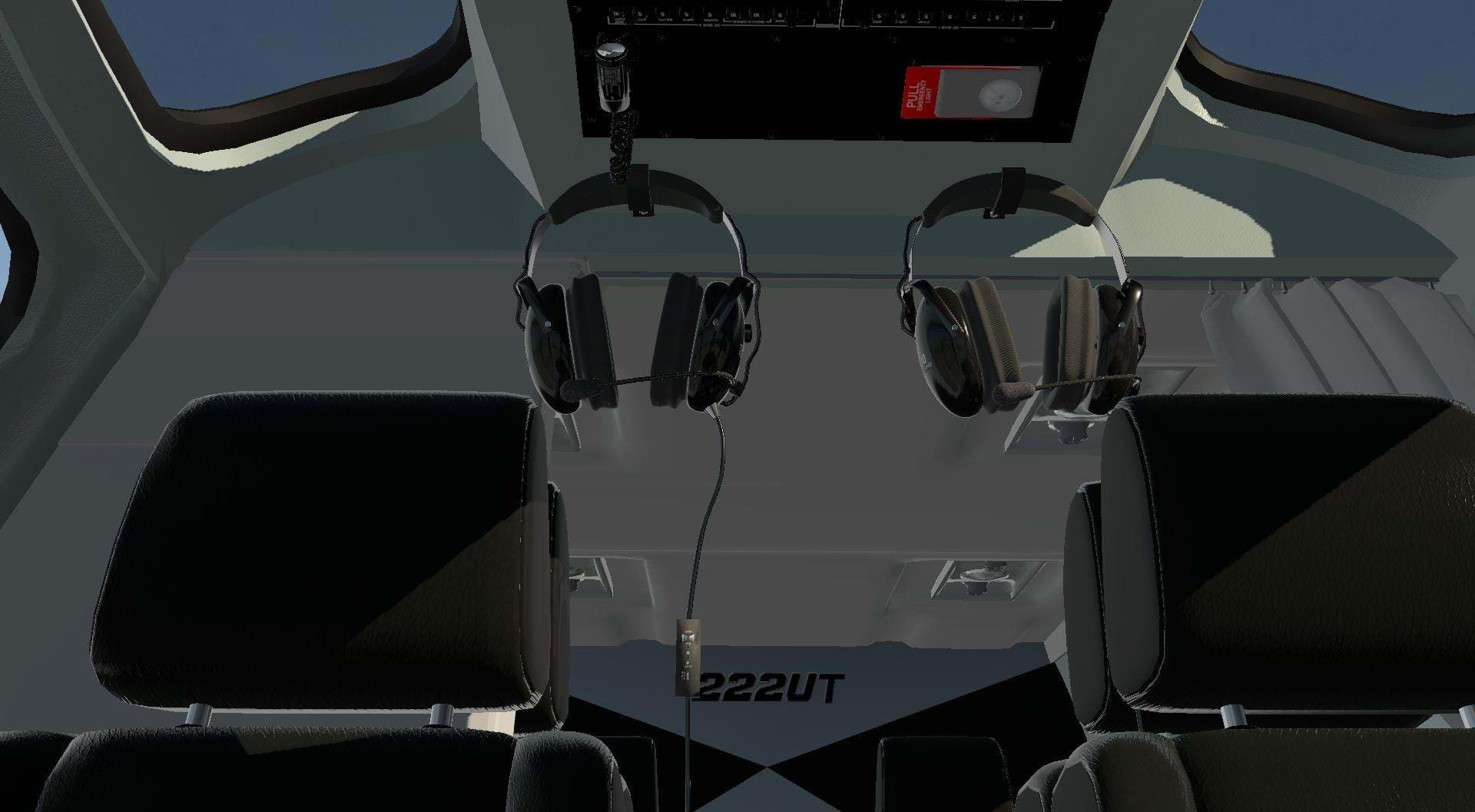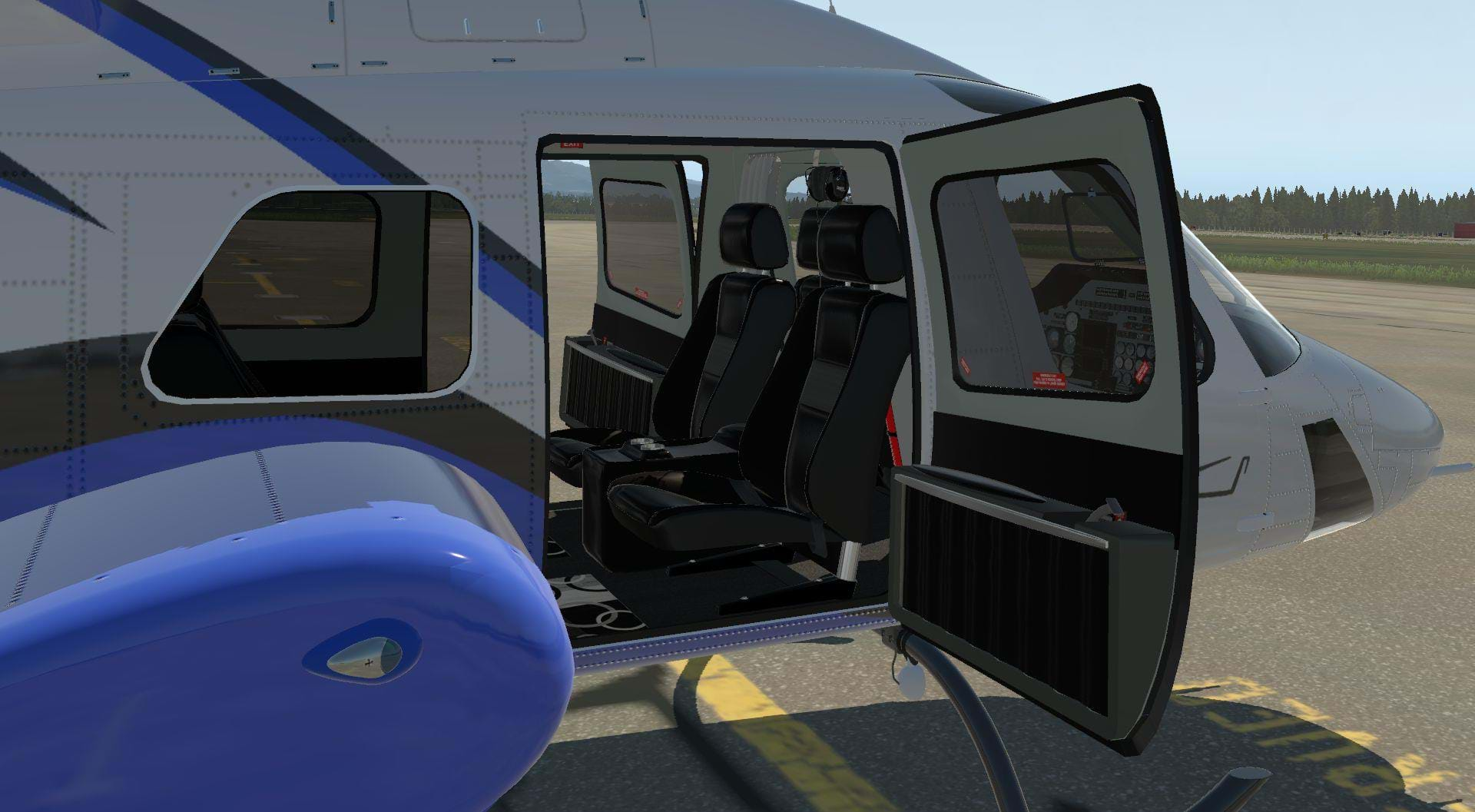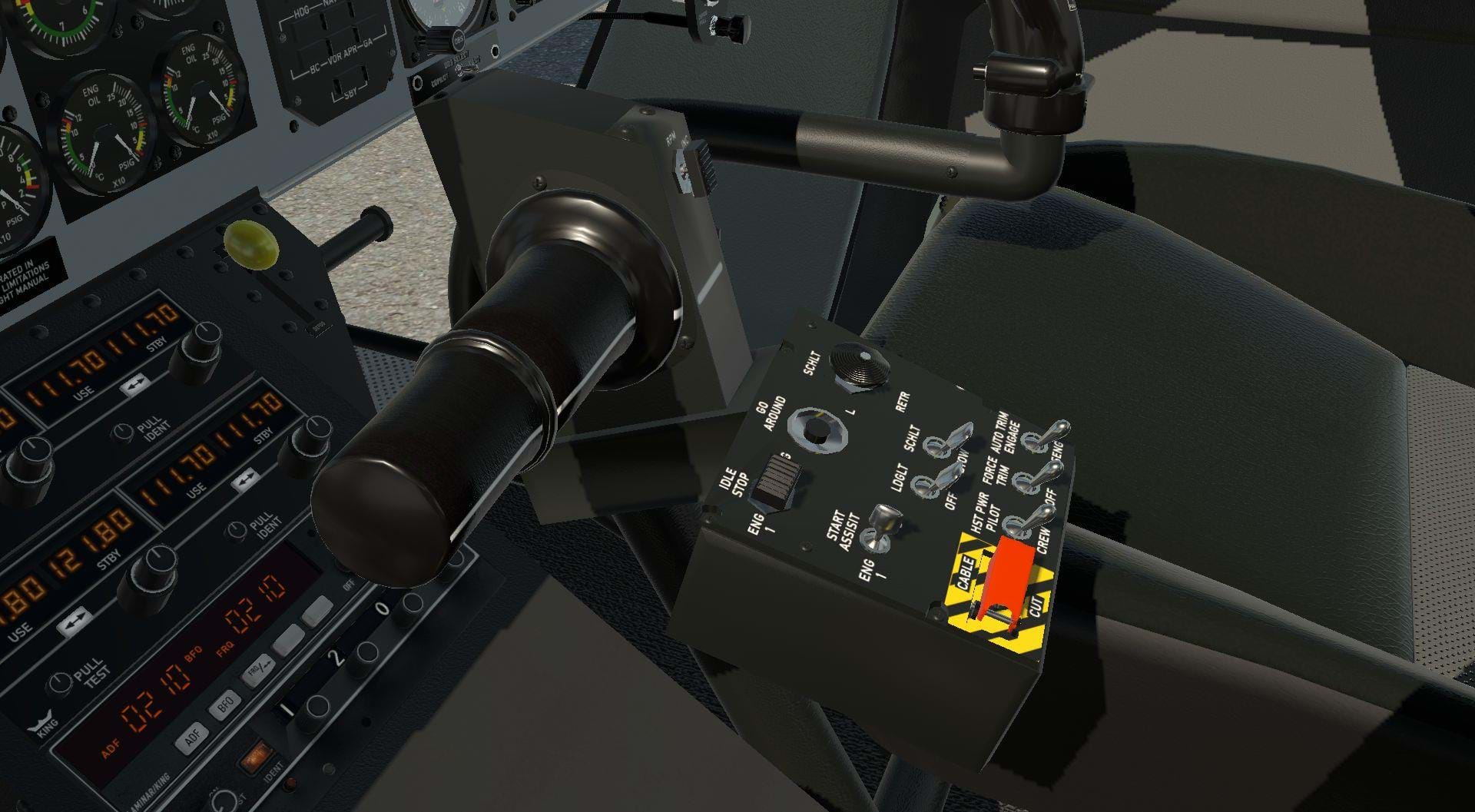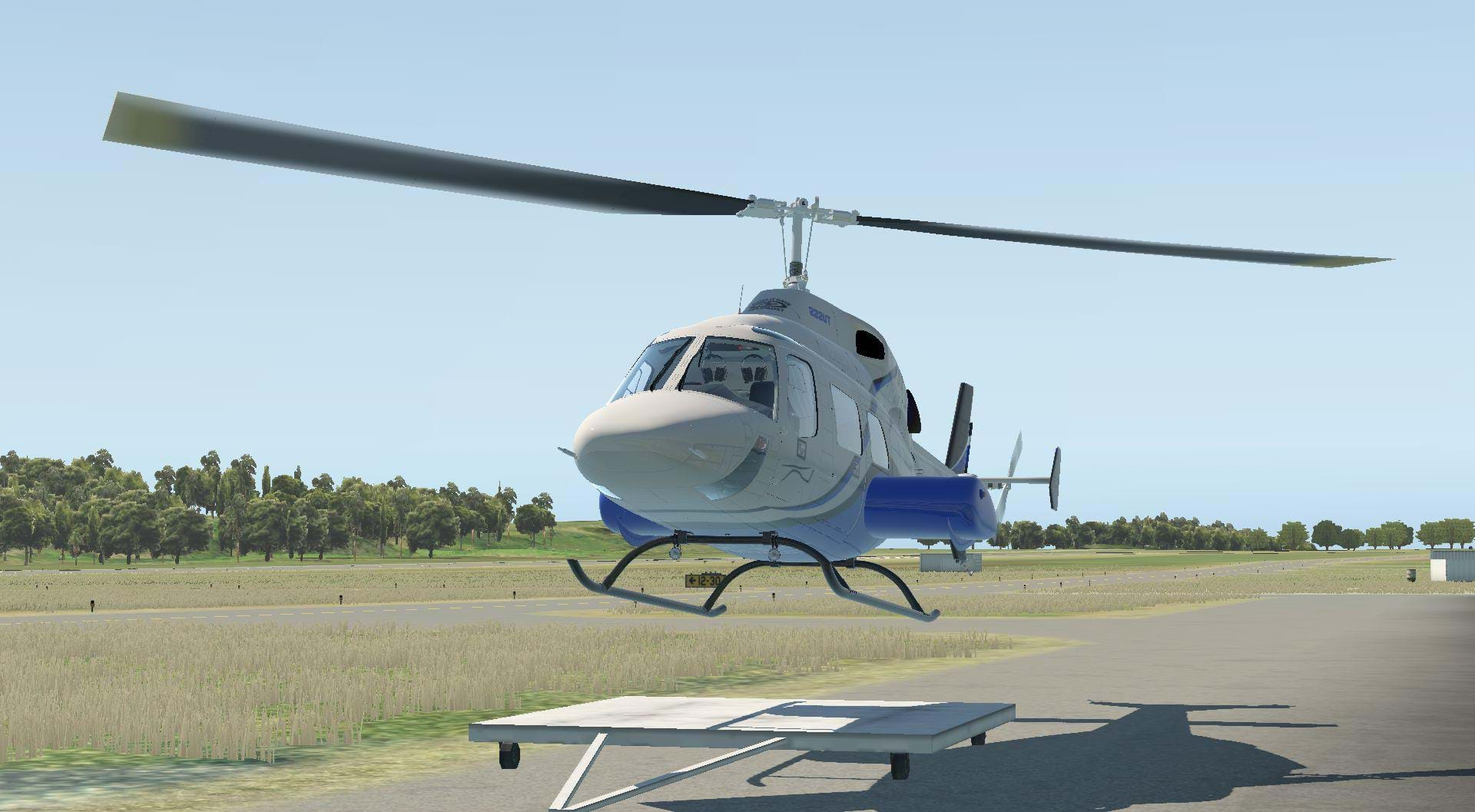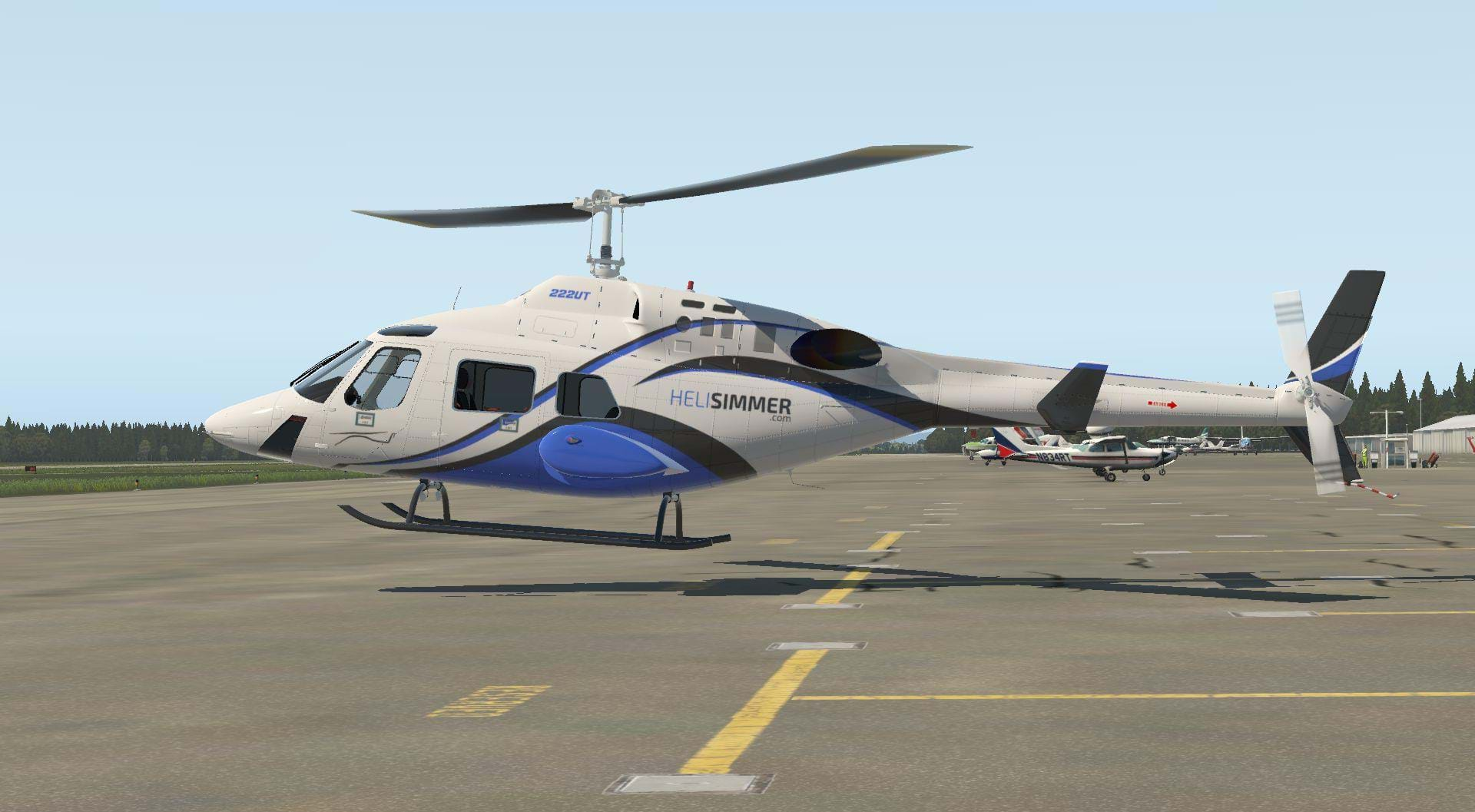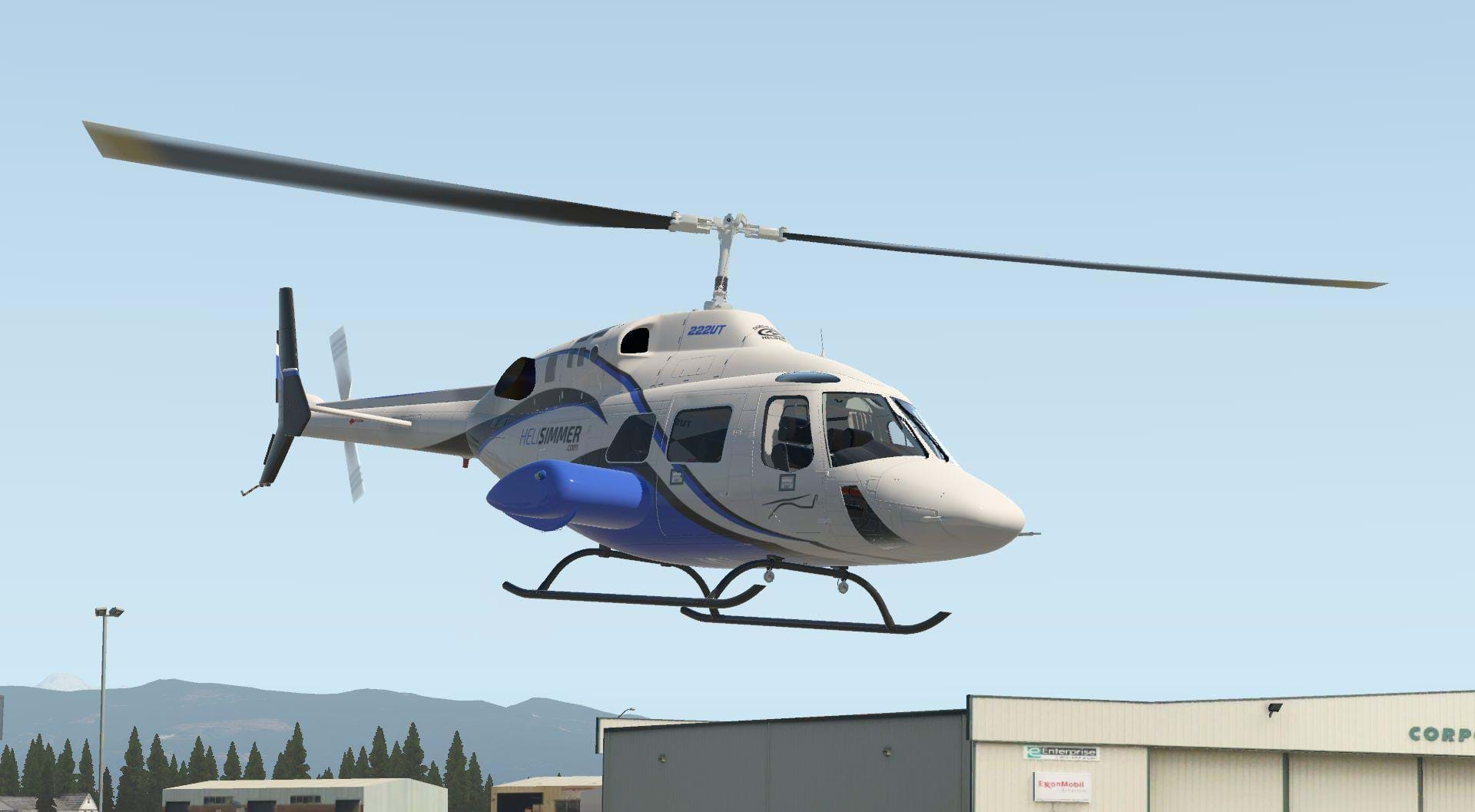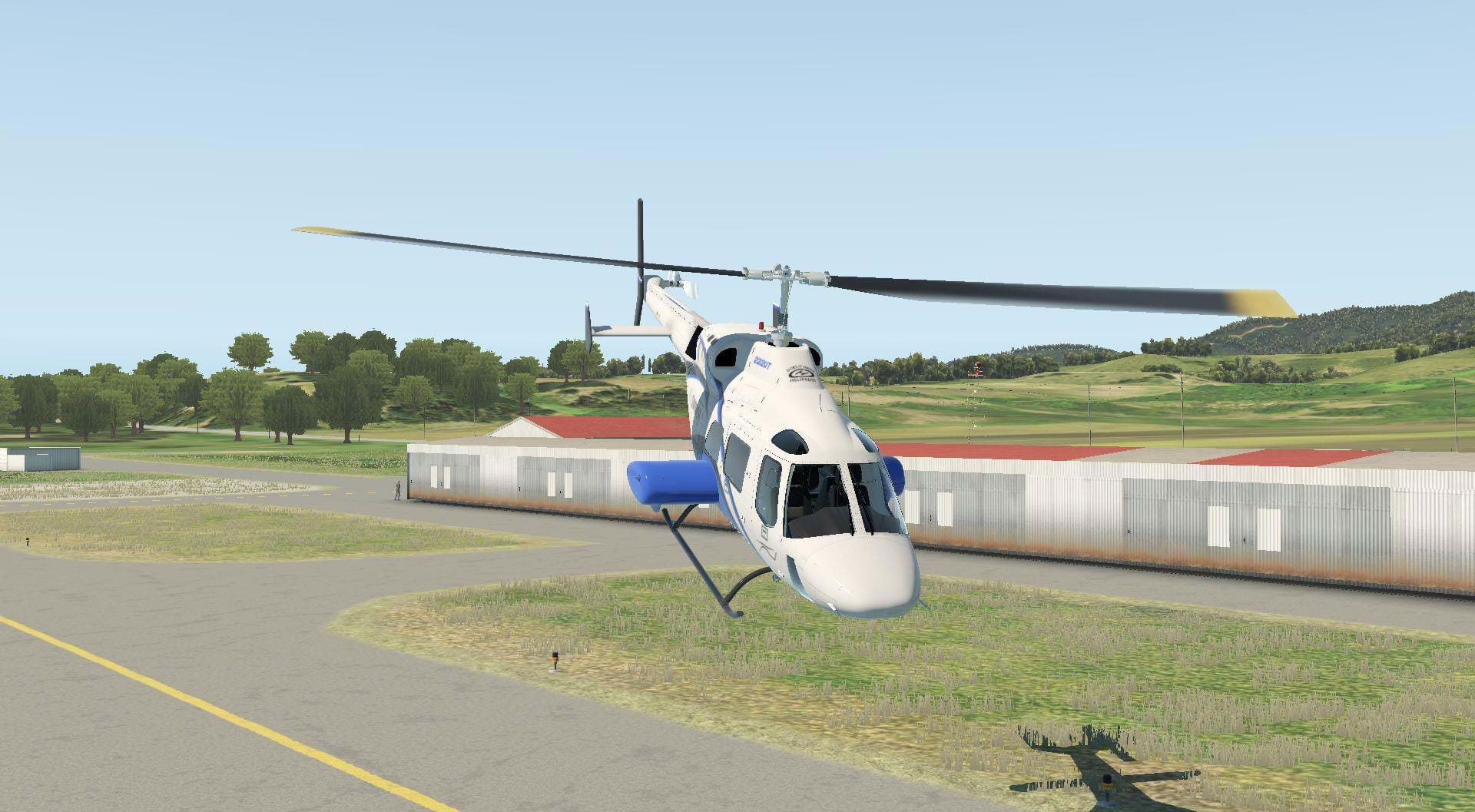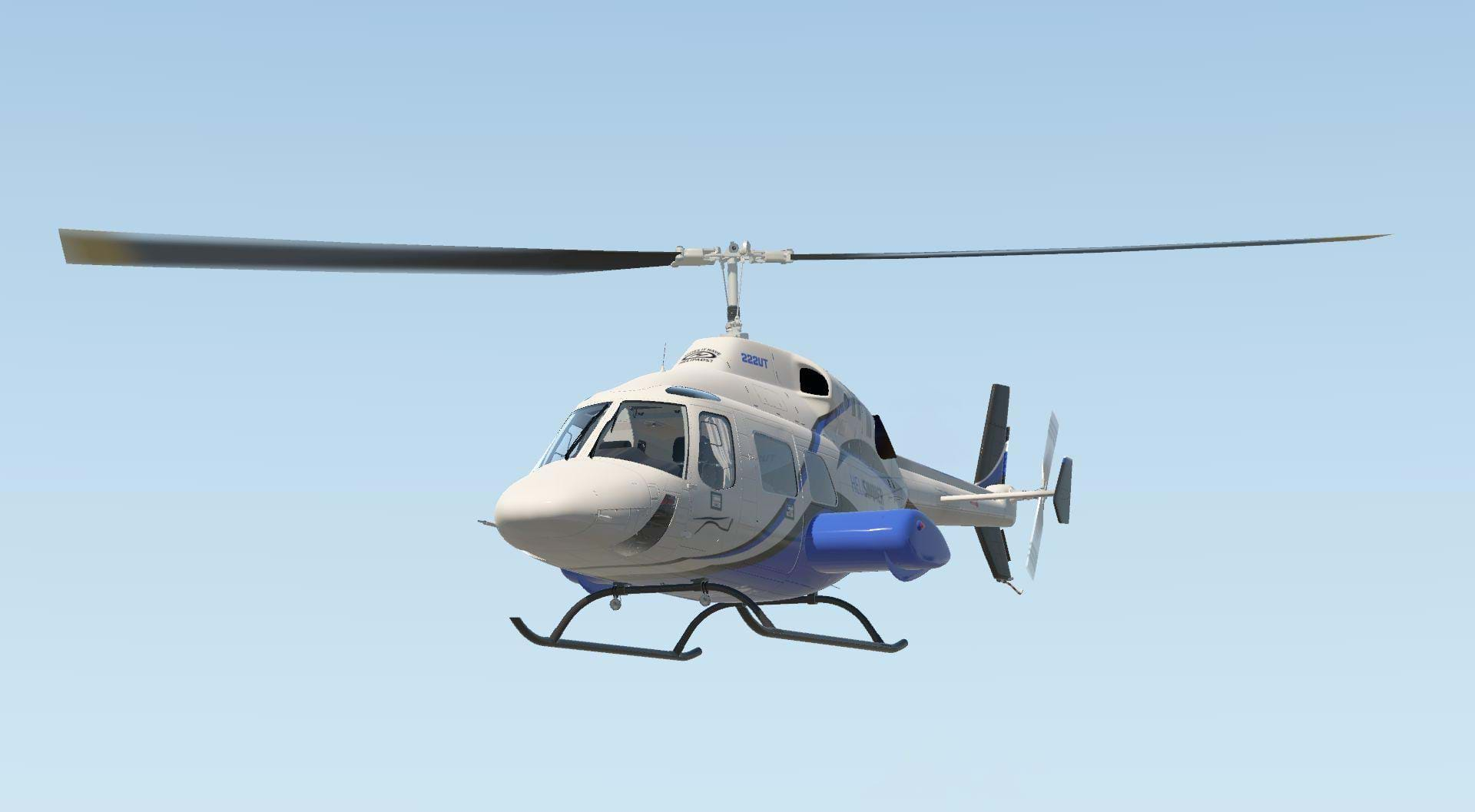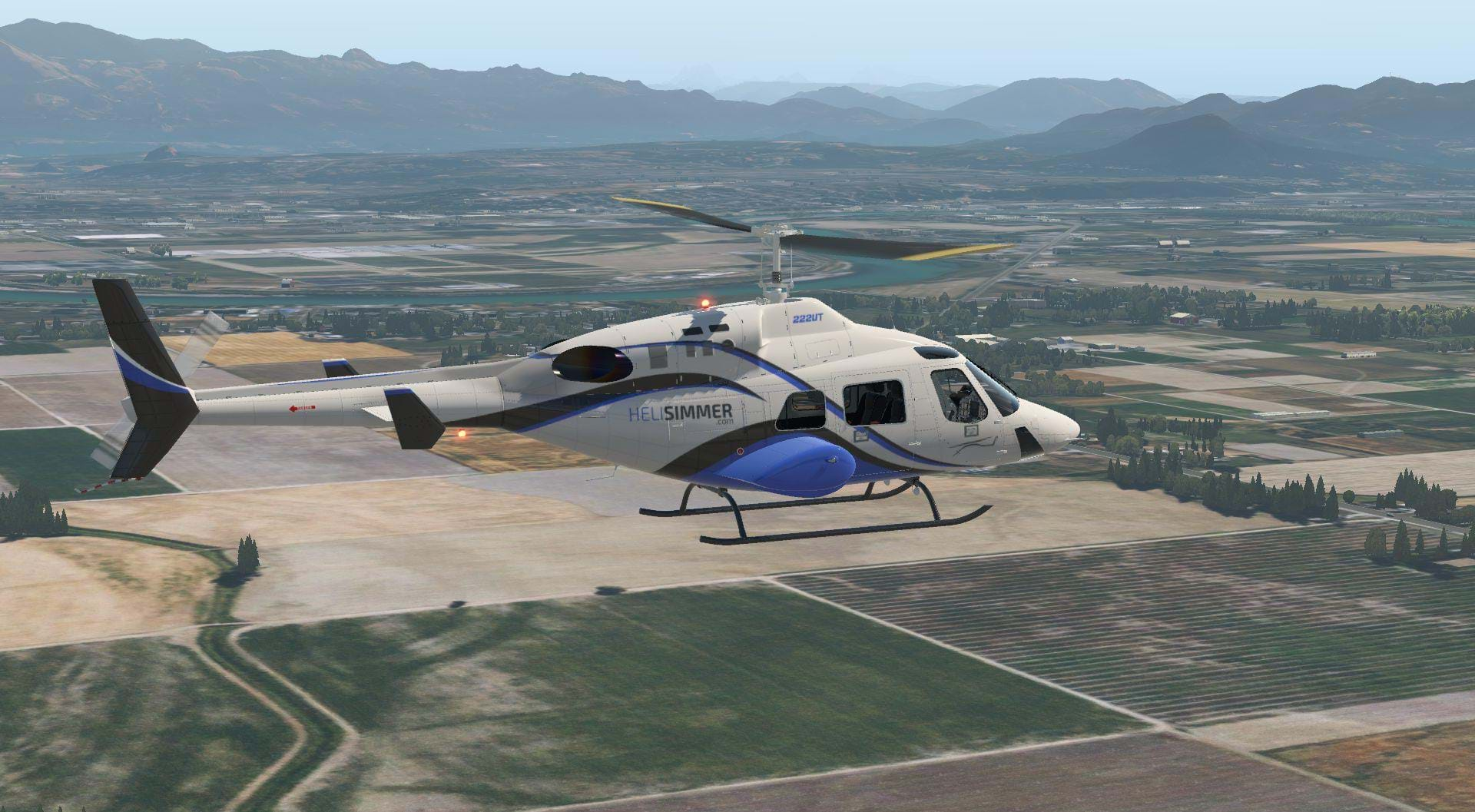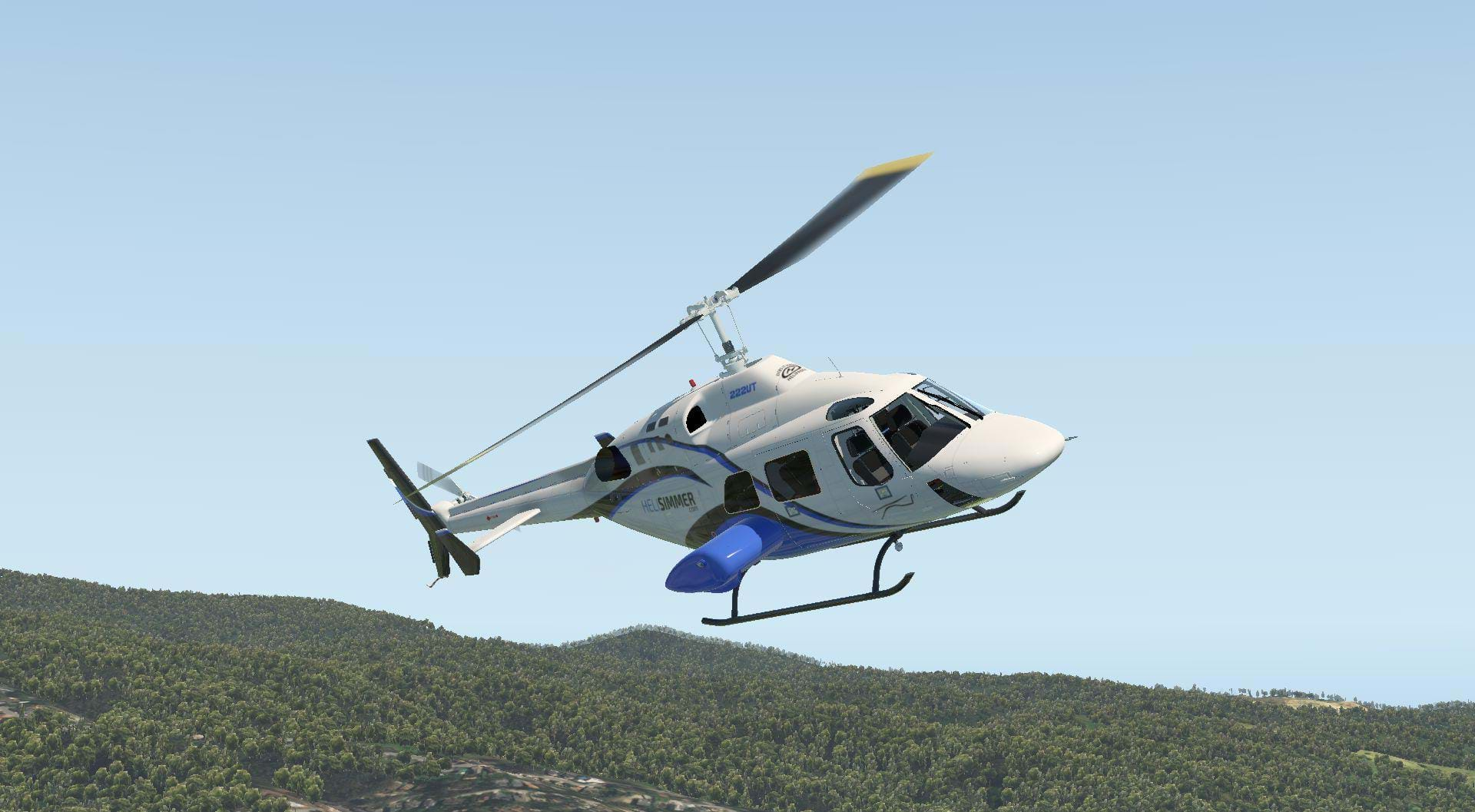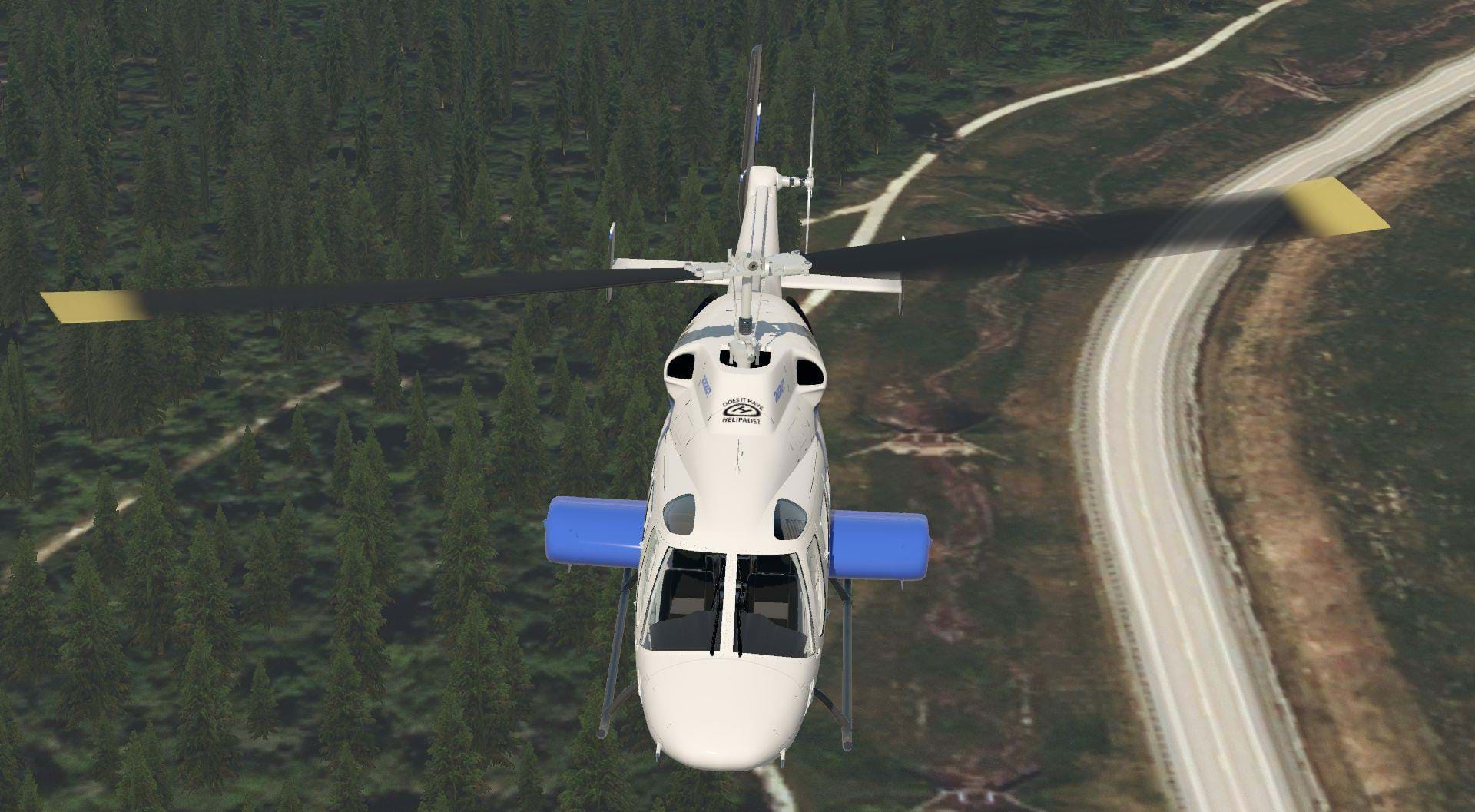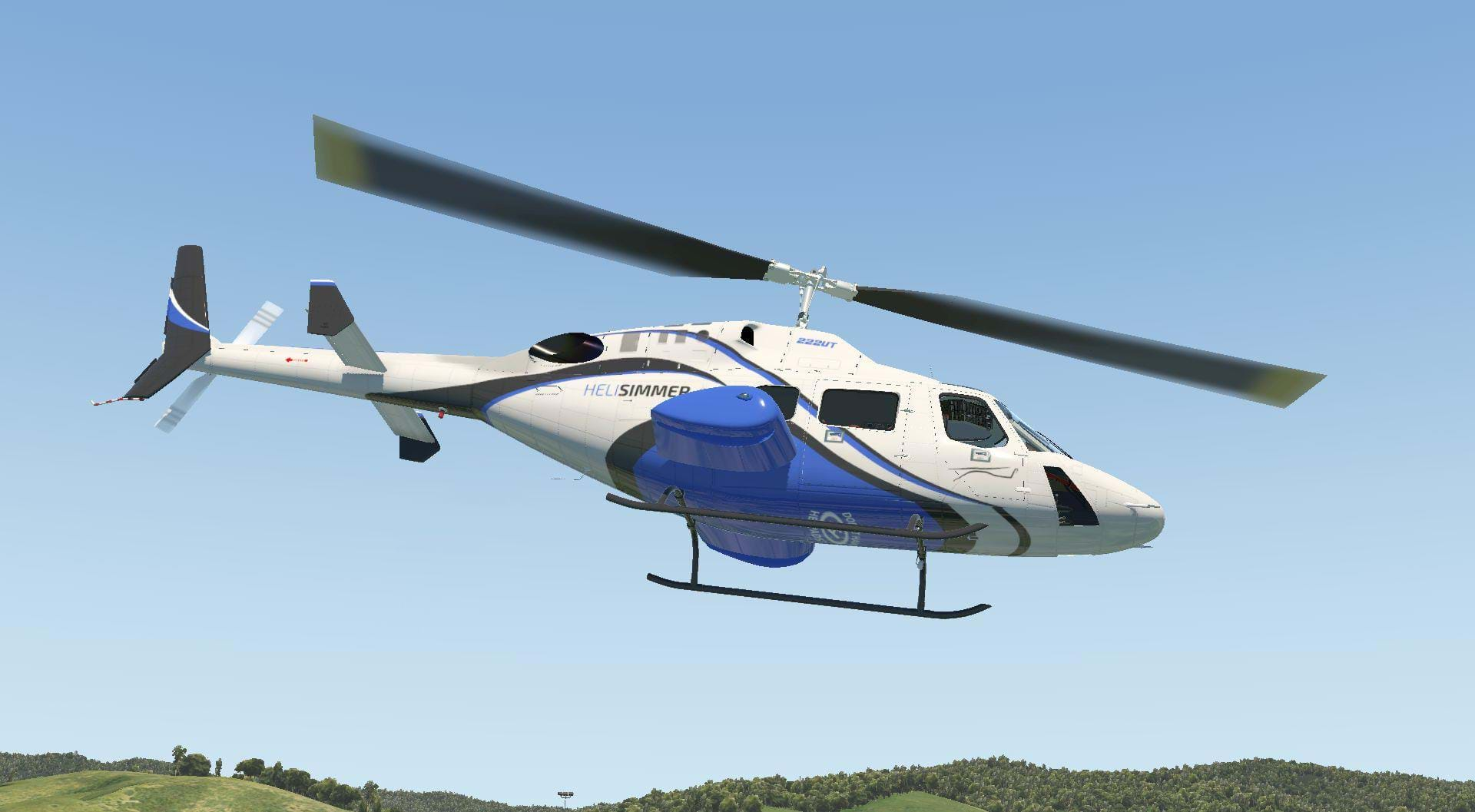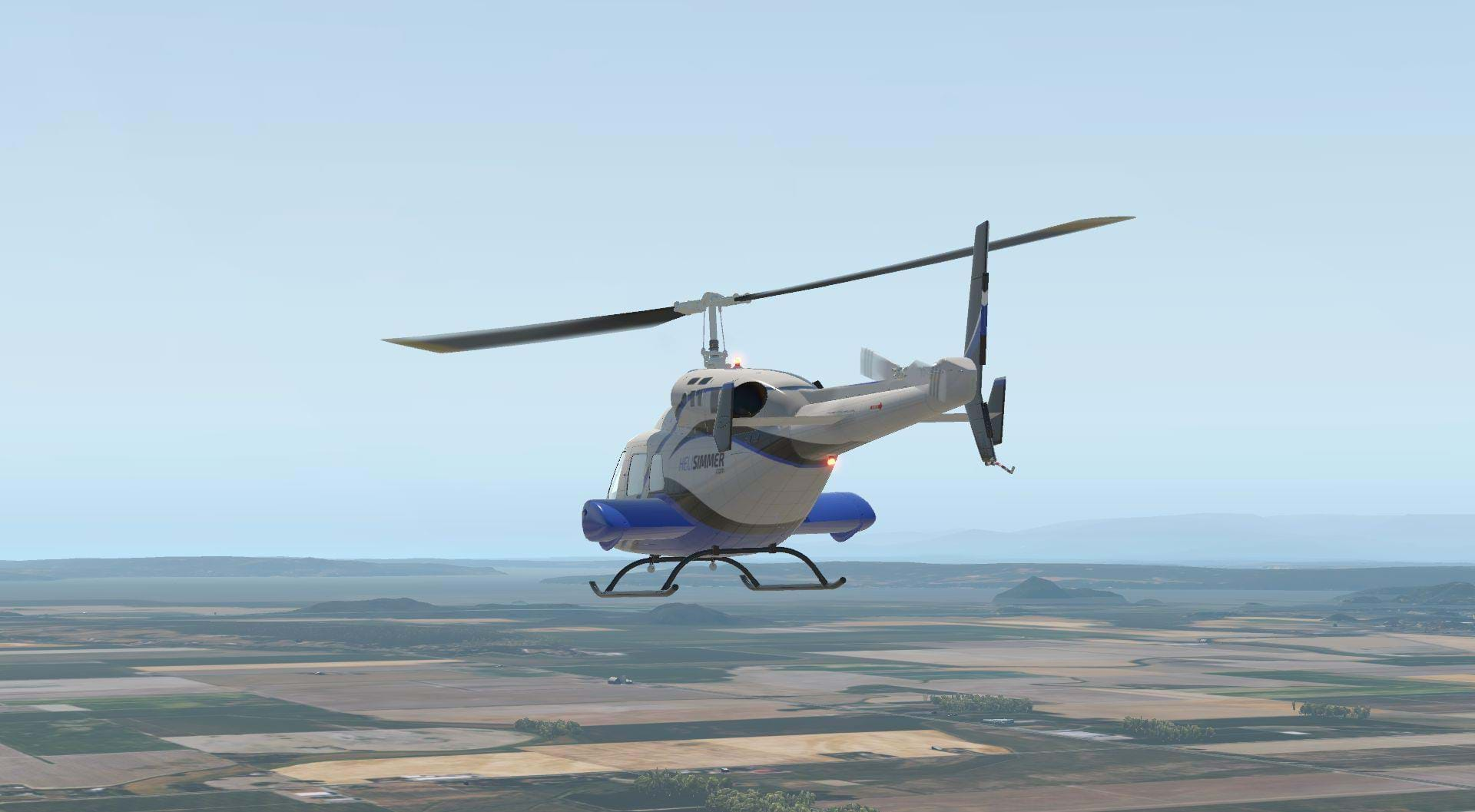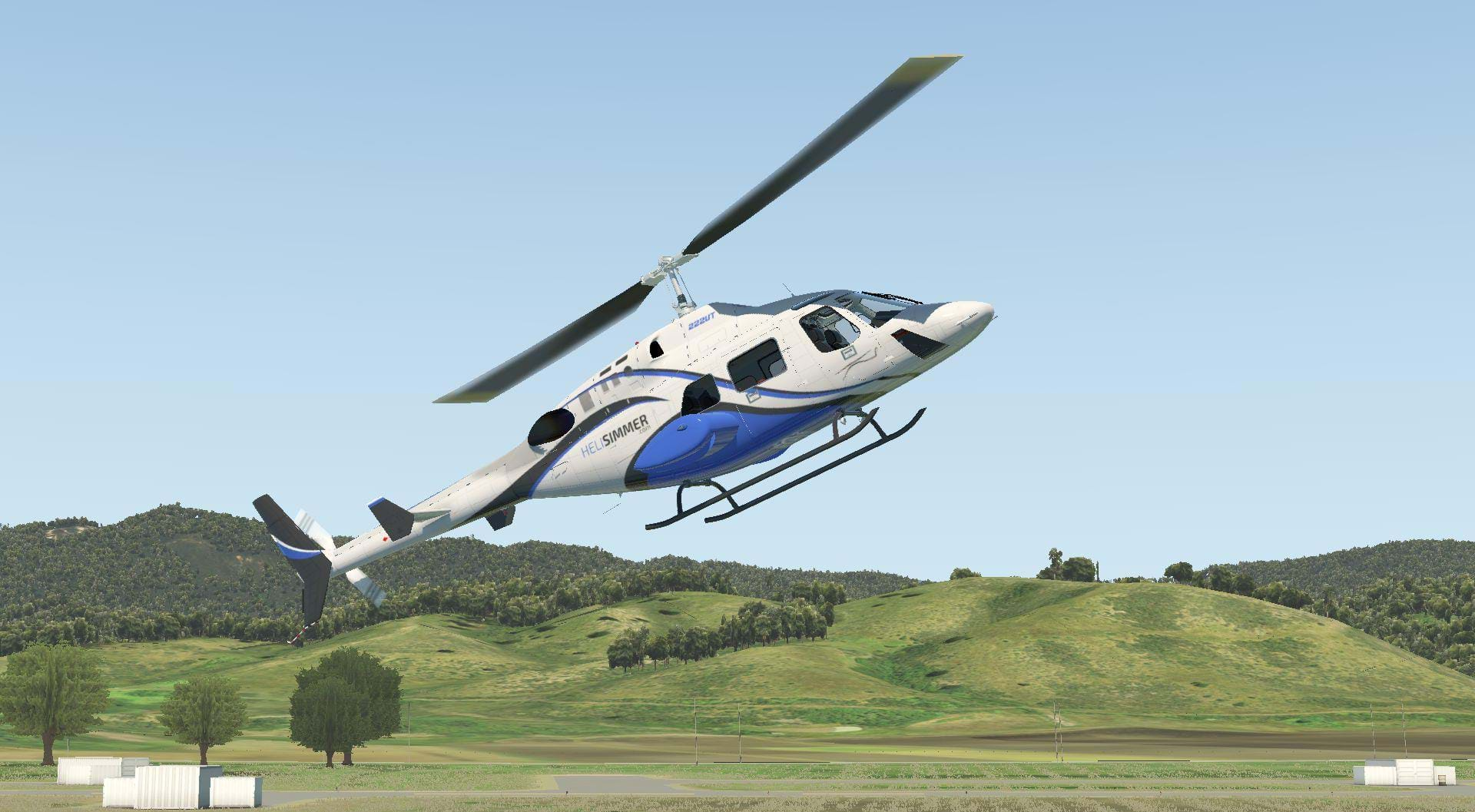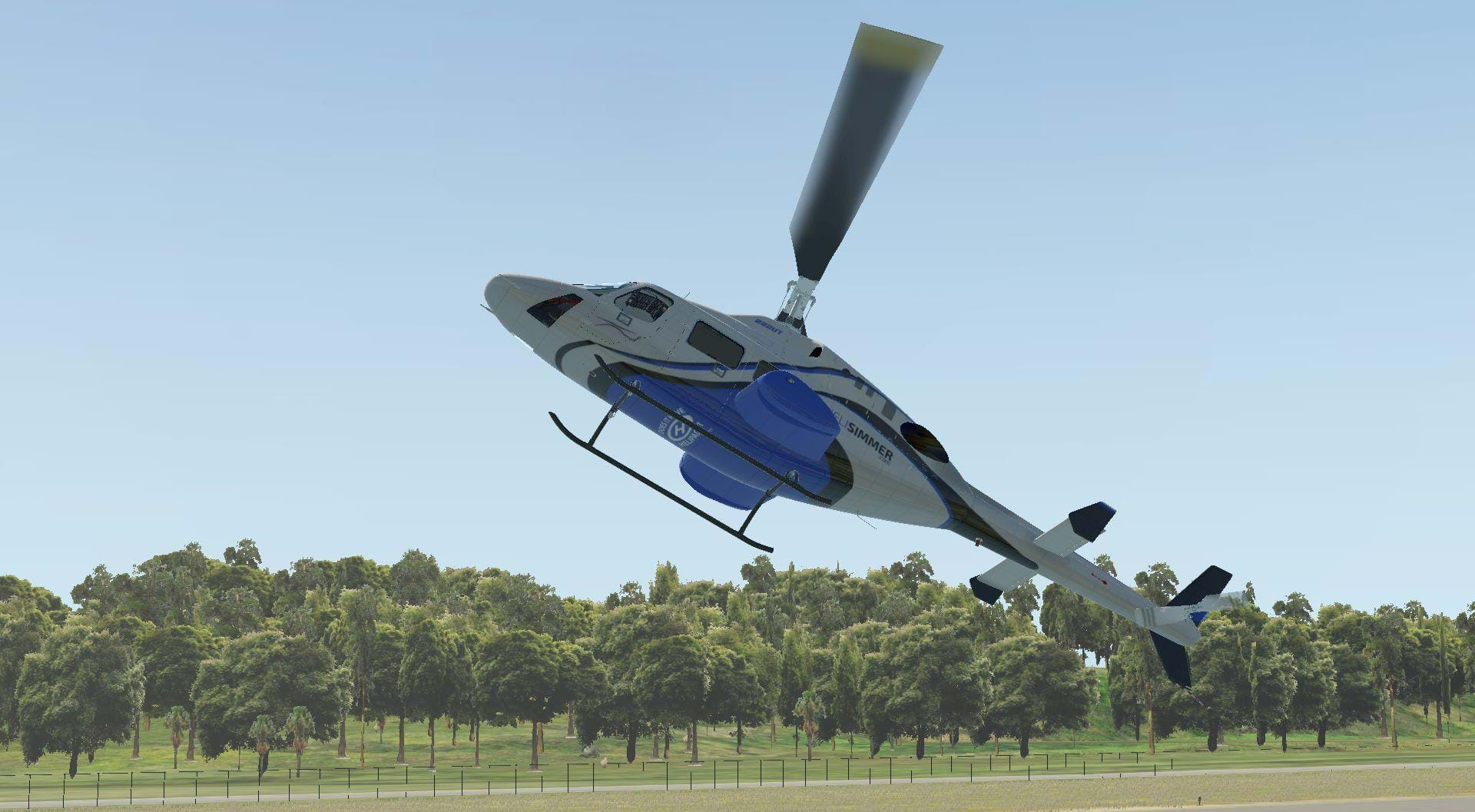Often affectionately known as the “Triple Deuce”, most people just call it the 222 spoken as “Two Twenty-two”. Her sleek lines made her a star almost instantly. And there was no doubt the TV Show Airwolf helped raise the 222’s profile and popularity.
The 222UT holds special place for me. When I was in civilian flight training at Rialto airport in California, the flight school I went to shared a ramp with a Mercy Air maintenance facility. At the time, Mercy Air operated a fleet of 222UT’s and one or two 222B’s. Almost every day for 3 years I got to watch these fantastic machines come and go, fueling even more inspiration and daydreams.
The UT isn’t the most popular variant of the 222. It didn’t have a long production run; only little over 70 examples were ever built. For the most part, a lot of casual observers and general 222 fans didn’t care for the skids on the aircraft because they interrupted the smooth lines that made this helicopter a favorite to look at.
But reduced aesthetics were made up for on the business side of things. The 222UT lighter weight, lower maintenance, has increased ground clearance and longer range than the 222B that it is based on. This made the 222UT popular with Air Ambulance companies, and other special use businesses. At least two examples I know of were used for external load work.
Now, for the first time, we have a payware 222UT for home simulation. CowanSim took on the task of bringing this aircraft to X-plane 11. Let’s see how it turned out.
Full disclosure: As always, I like to be completely transparent when it comes to my involvement with pay-ware products. I was a member of the beta test team for this model and in the weeks prior to its release I’ve tested it and provided feed back to the developer. The owner is a well respected contributor to the helicopter simulation community; however, this is payware, so I will be picking it apart like I do for every other model I’ve reviewed in the interest of the consumer.
Installation
This model installs just like any other X-plane add-on just unzip it into your X-plane Aircraft folder and you are ready to go.
First Look
This is CowanSim’s first payware offering ever. And I gotta say, they did a pretty good job.
The sleek classic shark like shape of the 222 is captured very well here. The 222 has a very distinct shape, and getting it right is important to the look. A bad 222 representation is easy to spot, there are plenty of sim models over the years that have horrible proportions, or misshapen nose sections that make this helicopter look like a silly cartoon version of its self, (I know I’ve made several 222’s for older Microsoft flight sims, most of mine were terrible!) so I was really pleased to see how well the fuselage model turned out.
Most of the details are there. There are a few things missing, but you have to really be familiar with the 222 to notice.
There was one detail that I noticed that I couldn’t overlook. The main rotor system is proportionally small for this aircraft. The 222 shares a similar rotor system as the YAH-63. That is a big, robust rotor system swinging large barn door wide chord blades around.
The CowanSim 222 gets the blades right for the most part, but the pitch change housings and other components are way too small, giving this rotor a very odd look. Almost as if this model has the wrong rotor head installed. Most of the parts at the top of the rotor mast are too short and narrow. But the animation of the entire main rotor assembly is very good.
The tail rotor looks good, but there are some discrepancies. Like most bell helicopters, the tail rotor is a very simple teetering delta hinged system. But this model lacks some of the more defining details of the tail rotor system.
The tail rotor hub is a simplified version, and some components like the counterweights are missing. The textures look like all of the hardware have been chromed, which isn’t common, but it would be great for corrosion resistance!
The interior looks really good. It is obvious there was a lot of time put into it. The texturing of the leather seats is well done. It is a bit odd to see a pilot seat with a head rest in a 222, but it still looks good.
The instrument panel is a good representation of a 222. I also love the option to swap the radio stack on the center console and the dual GPS displays.
The internal molding around the cockpit has a realistic plastic feel to it that is really convincing; the rest of the upholstery looks pretty good. There are also a few details that make this model feel really authentic, like noise canceling head sets and the first aid kit hidden behind the co-pilots seat for example.
The passenger cabin looks clean and luxurious.
And there is an included option to take the pilots doors off. The only time I’ve ever seen a 222 operate with the front doors off is in an episode of Miami Vice, which is more than enough justification for me to have this feature. And also, because this is the utility variant of the 222, you bet that I’m going to do sling loads with it so having the option to remove the doors is something I plan to take advantage of.
Sounds
It might come as a shock to some people, but 222’s doesn’t actually sound like Airwolf.
CowanSim did really well on the sounds for this model. The 222 has big wide chord blades that really smack the heck out of the air around them.
They don’t ask – they demand that lift be created. CowanSims 222 doesn’t shy away from this, and as far as I can tell, the external sounds are recorded from an actual 222, perhaps from a distance, but it’s a triple duce alright.
I’ve yet to get a hold of an actual 222 to fly, they’re getting quite rare in the United States, so I can’t verify the internal sounds are accurate, but they are convincing.
Systems
I’ve never flown the real 222UT, although not for lack of trying. So I really don’t have much to more to go on for realism except for the POH.
Aside from the normal “sim-isims” this model follows pretty close to the start up check list from the actual Bell 222 manual. The throttle and idle release system take a bit of getting used to.
In the actual helicopter it makes sense but translating that into the sim makes things a bit interesting. Getting used to the manipulators for the throttles, via mouse, assignments to joystick hardware, or VR controllers can be a challenge. I highly recommend checking out the videos on the CowanSim YouTube channel to get an idea of how it’s done. If you can’t figure out why the throttles aren’t moving, there is a good chance you haven’t used the idle release switch.
Because everyone has different flight controls, and there is likely no solenoid actuating the idle stop on your physical controls at home, you can end up performing an almost modulated start because the throttle in the sim locks at idle, but the throttle that’s actually in your hand didn’t.
But instead of modulating MGT its NG, the MGT will stay put at about 550° after fuel is introduced during start but NG will fluctuate with throttle input, which is really weird. So, because of that, it can be hard to tell when the throttle in your hand is in what the sim shows as the idle position.
Fuel and oil pressure comes alive when you expect them to, the rise of all of the needles look good, the rest of the engine start is pretty much as expected.
The Auto pilot works reasonably well, and is very useful for IFR/IMC flight. The NAV systems are great for this too. This 222 gives you a dual GPS by default which is very nice. Although the sim has buttons for the dual hydraulic system, I didn’t notice any difference in control response with both systems turned off.
Flight dynamics
The Bell 222 family of helicopters has a reputation for being very stable and easy to fly, so for all of the “hard to fly equals realistic” and the “this isn’t twitchy enough, the flight model sucks” guys need to settle down right now before we go any further.
I’ve been flying helicopters in real life for the better part of 20 years, and cringe when a simmer describes a helicopter as “twitchy”. A twitch is a short, sudden jerking or convulsive movement. If a helicopter I was flying started twitching, I would land it immediately because there is something terribly wrong with that aircraft. It’s not a favorable flight characteristic, and is no way an indication of realism.
Ok, rant over.
The CowanSim Bell 222UT behaves a lot like a helicopter its size should. Even though the 222 was the first “light” twin put into production in the United States, Bell hadn’t really come up with any new engineering ideas at the time the 222 was being developed, so it stands to reason that the handling of the 222 is similar to its smaller cousins.
All of the 222 pilots I’ve spoken to tell me the 222 is the Jetrangers’ bigger twin engine sister, or something to that effect. The Cowansim 222UT seems to get that right.
The amount of left pedal at a hover feels right. Cyclic response isn’t too sensitive, and the model is appropriately stable. This model hovers a little nose high, as it should, and a little left skid low, also as it should. I found overall hover performance of this model more than satisfactory.
Cruise flight in the Cowansim 222UT is uneventful, as any good helicopter should be. This model is well behaved, climb power will give you a decent rate of climb, and she accelerates a little faster than I would expect, but not fast enough to say it’s unrealistic. The pedal input required to maintain trim is just what I expect in a helicopter with a counter-clockwise rotating main rotor system.
The 222 was one of the first helicopters to be certified for single pilot IFR flight by the FAA. This is a testament to its stability and docile flight characteristics.
This model might just become another favorite of mine for IFR/IMC training. If you’re looking for a basic instrument trainer in X-plane, this model would be a good choice. During testing I did three IFR/IMC flights and this model was very well behaved in the clouds. The autopilot makes life a lot easier when tuning radios and NAVAIDS, but if you want to old school it, its forgiving docile flight characteristics make it a good choice for doing it without automation.
Single engine performance in this model is about where I hoped it would be. There aren’t many twin engine helicopters available for X-plane. This one does seem to have the appropriate OEI performance. Once one engine is off you’ll see the torque on the other engine immediately double to pick up the load, which is what I would expect from a twin engine helicopter.
Performing a dual engine out autorotation in this model is good, but not great. The rate of decent feels about right at the POH recommended airspeed of 80kts. 65kts is the minimum, and you will fall out of the sky any slower than that.
Rotor RPM tends to hang out on the low end of the green arch during the decent, which is an uncomfortable sight but not deadly in a simulator. My only gripe with autos in this model is that it has a hilariously high inertia rotor system. All early bell helicopters had high inertia rotors, but… this system has energy for days!
It holds on to RPM long after any real rotor system would when raising the collective. This makes normal applications of collective cause the model to balloon back up into the sky, or you can stop the decent and just float down the runway if you like.
One thing I did notice about this model is that you can easily get to the limits of Ng at sea level. Usually Ng limiting is only ever encountered at high density altitudes, it’s rare to be NG limited at sea level on a 70°F day.
I’ve never flown an aircraft with LTS 101’s, so I can’t say for certain that this is unrealistic, but I’ve never had an engine reach NG limits at sea level. You’ll almost always reach a torque or temperature limit first. But to this models credit, I did see a drop in rotor RPM when I reached the Ng limit.

